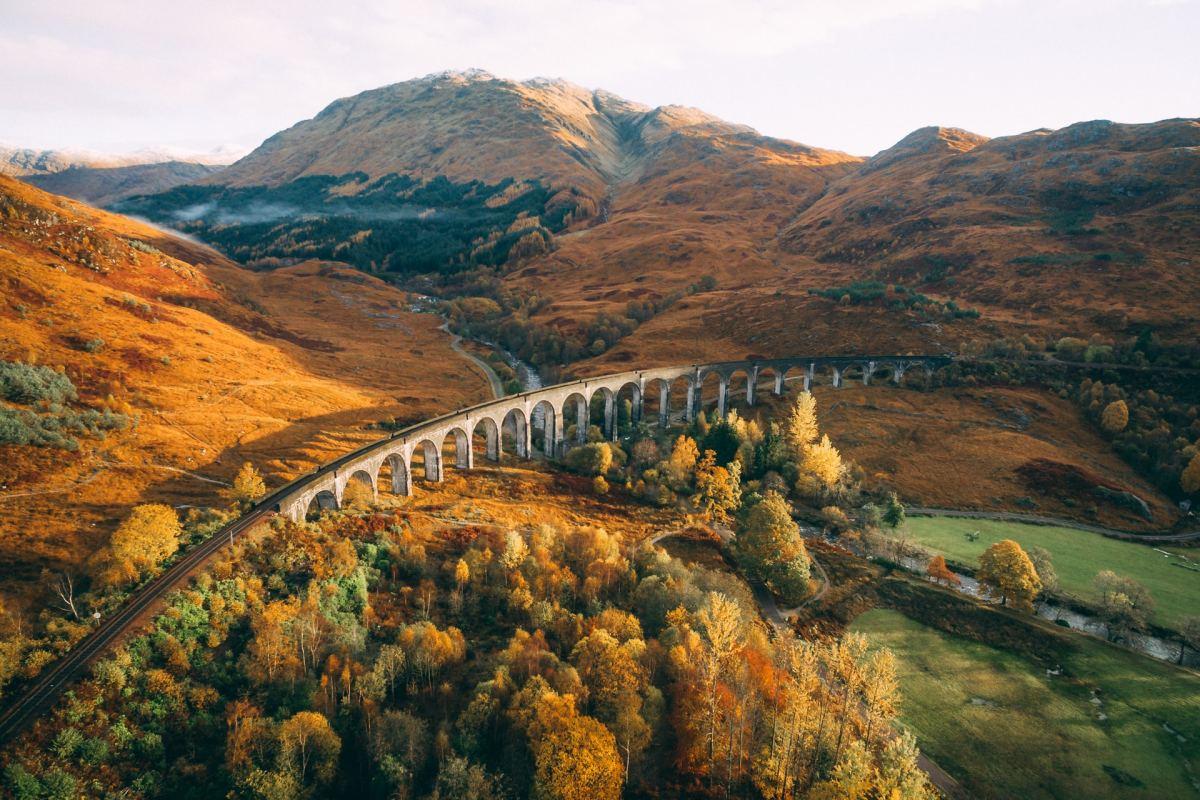42 Most Famous Landmarks in Spain (100% worth a visit)
With no less than 41 cultural buildings listed as UNESCO World Heritage Sites, Spain has plenty to attract tourists all year round for both historical and cultural discoveries.
The country, which ranks second in the world tourist destinations ranking, is rich in fascinating history, has incredible monuments as well as sumptuous landscapes, delicious gastronomy, a very nice climate… In short, Spain is a dream destination for any traveler!
Do you know what are the most famous landmarks in Spain?
Here are 42 famous Spain landmarks, man made and natural included!
The Full List of the 42 Most Famous Landmarks of Spain
We can divide the Spanish landmarks into 2 main categories: the man made landmarks, that are all kinds of historical monuments in Spain (castles, religious buildings, museums…); and the natural landmarks that are all kind of natural wonder.
Discover below our selection of the 42 most famous landmarks of Spain, breakdown by category.
🏛 Famous Spain Monuments:
- La Sagrada Família
- Park Güell
- Casa Battló
- Casa Milà
- Temple of the Sacred Heart of Jesus (Sagrat Cor)
- Alhambra
- Alcázar de Sevilla
- Catedral de Sevilla
- Plaza de España
- Puente Nuevo
- Alcázar de Segovia
- Catedral de Segovia
- Aqueduct of Segovia
- Catedral de Ávila
- Muralla de Ávila
- Royal Palace of Madrid
- Museo Nacional del Prado
- El Escorial
- Toledo Old Town
- Catedral de Santiago de Compostela
- Catedral de Burgos
- Guggenheim Museum Bilbao
- Valencia City of Arts and Sciences
- Mosque-Cathedral of Córdoba
- Teatro Romano de Mérida
- Castillo de Colomares
- Castell de Bellver
- Catedral de Palma de Mallorca
🌴 Famous Natural Landmarks in Spain:
- Caminito del Rey
- Picos de Europa
- Somiedo Natural Park
- Playa del Silencio
- Montserrat
- Costa del Sol
- El Torcal de Antequera
- The National Park of Ordesa y Monte Perdido
- Bárdenas Reales
- Tabernas Desert
- Caves of Nerja
- Las Médulas
- Mount Teide
- Timanfaya National Park
So, here’s the answer to “What are the famous landmarks in Spain?”. To learn more about each of these places, keep reading below!
Famous Spain Monuments
Because of its fascinating history mixing Arab-Muslim and Latin-European influences, Spain is full of unique monuments that you can’t see anywhere else in the world.
There are so much famous buildings in Spain, but we had to stop the list at some point. So here are 28 of them!
1. La Sagrada Família
Located in Barcelona, La Sagrada Família is the most visited monument in Spain, and the most iconic landmark of the Catalan city.
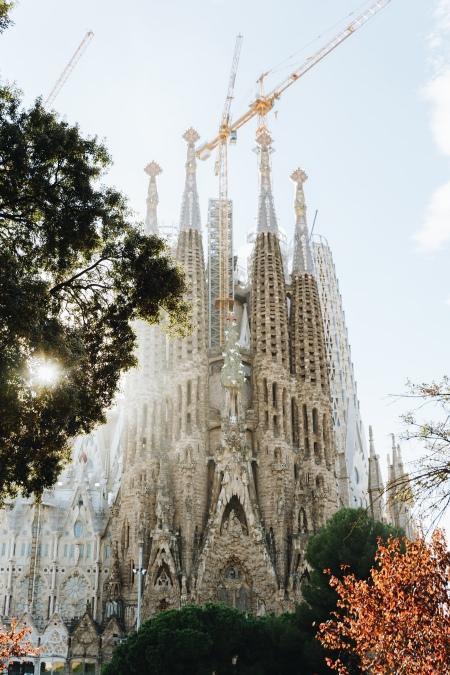
You can easily understand why when you arrive at the basilica: the building is impressive with its unique architectural style mixing Gothic and Art Nouveau, and all the Catholic details ardoning its facade.
Listed as a UNESCO World Heritage Site, the basilica was designed by the famous architect Gaudí and is now the most famous landmark in Spain. While its construction has started in 1882, it’s not finished yet. La Sagrada Família is scheduled to be completed in 2027, which is 145 years later!
2. Park Güell
Another incredible project that came out of Gaudí’s imagination, the Parc Güell was originally intended to be a garden city composed of 60 houses and a chapel. Gaudí’s crazy ambitions had to be scaled back for financial reasons and the work was finally completed in 1914 after the construction of only 4 houses and the park.
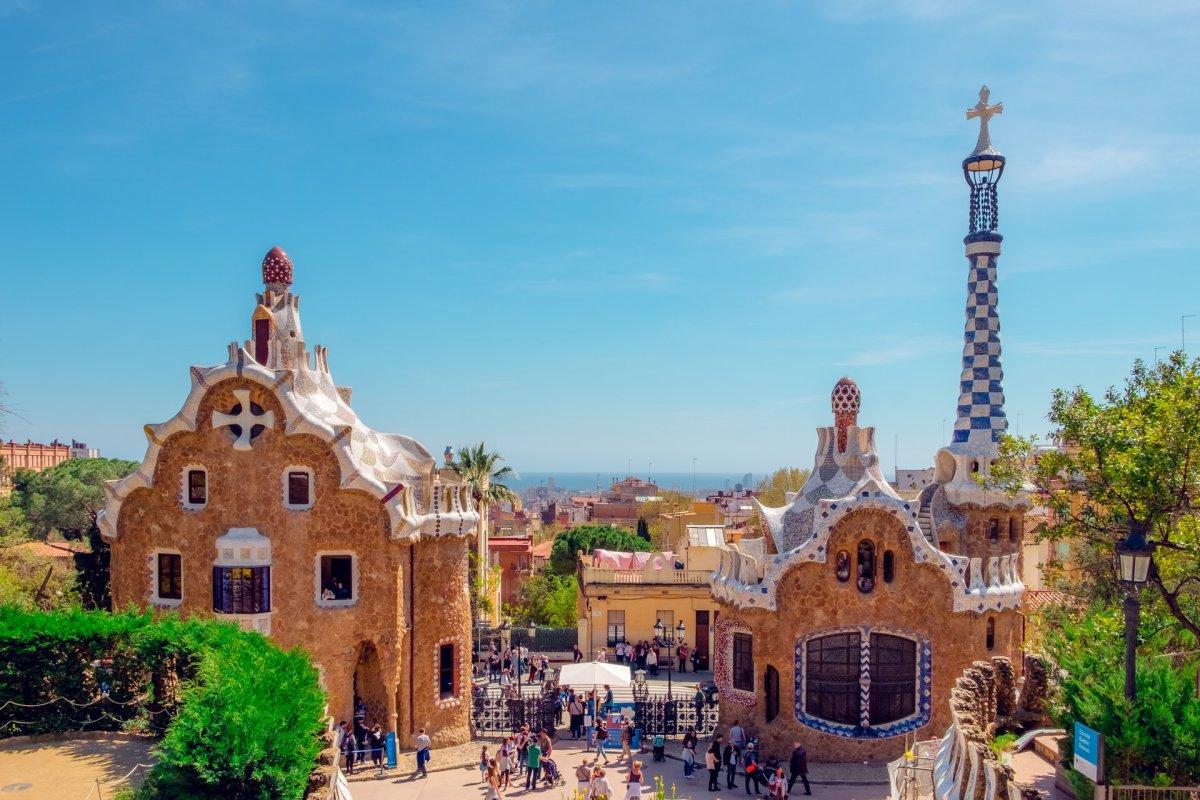
The Park Güell is now part of the UNESCO World Heritage and can be visited during a walk to admire many of Gaudí’s famous works such as the colored salamander.
Located in Barcelona, this park offers a beautiful landscape, a maze of greenery and beautiful mosaics. You can also enjoy a breathtaking view of the city from the Mirador de Virolai.
3. Casa Battló
Let’s stay in Barcelona, and more precisely on the famous Passeig de Gracia where we can find 2 other amazing works of Gaudí.
![]()
With its undulating facade and kaleidoscopic mosaics, Casa Batlló is one of Barcelona’s most emblematic sites. With its modernist facade reminiscent of the sea and its architectural details, Casa Batlló represents all the genius of Gaudí.
The interior is just as fascinating as the exterior, with its curves, skylights and variety of materials used. Once you reach the rooftop, you can admire the view of Barcelona, simply magical at sunset.
4. Casa Milà
Casa Milà is the second work of Gaudí on the Passeig de Gracia in Barcelona, 500 meters from the Casa Batlló. Listed as a UNESCO World Heritage Site, Casa Milà was Gaudí’s last project before his death.
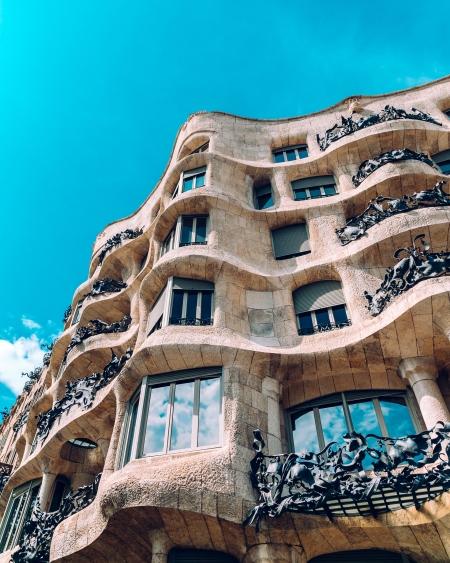
Also called “La Pedrera”, La Casa Milà was created between 1906 and 1910 in an Art Nouveau style, different from its neighbor. Its wave-shaped facade is one of the architect’s signatures, who’s said to have been inspired by the cliffs to design it. The large wrought iron balconies have plants, seaweed and rocks patterns that are also found inside.
Today, you can visit only a part of this building, the rest having been transformed into offices and apartments.
5. Temple of the Sacred Heart of Jesus (Sagrat Cor)
The Tibidabo peak in Barcelona is rather little known to tourists, yet it’s home to an exceptional monument that fully deserves its place in this post.
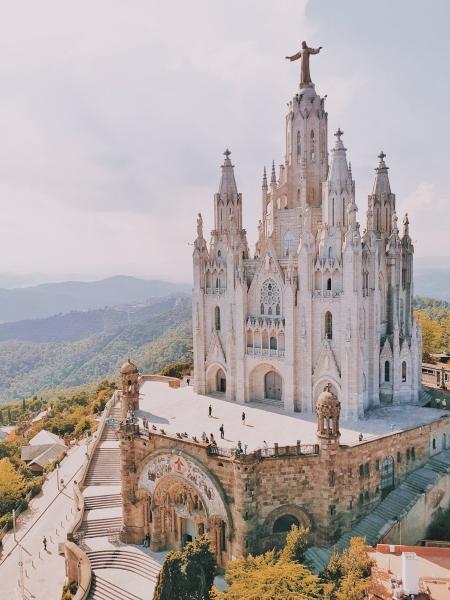
Located on the highest hill of the Collserola range at more than 500 meters above sea level, the park dominates the whole city and offers at its highest point a magnificent church, the Temple Expiatori del Sagrat Cor.
Built by Enric Sagnier and his son between 1902 and 1961, the church consists of 3 parts: the crypt, the church and the statue of Jesus Christ. You can easily access the church by cable car, and from there, admire one of the best panoramic views of Barcelona.
6. Alhambra
Located in Granada in Andalusia, the Alhambra is probably the most famous castle in Spain. This superb palace overlooking the city of Granada is also one of the most important monuments of Muslim art in Spain.
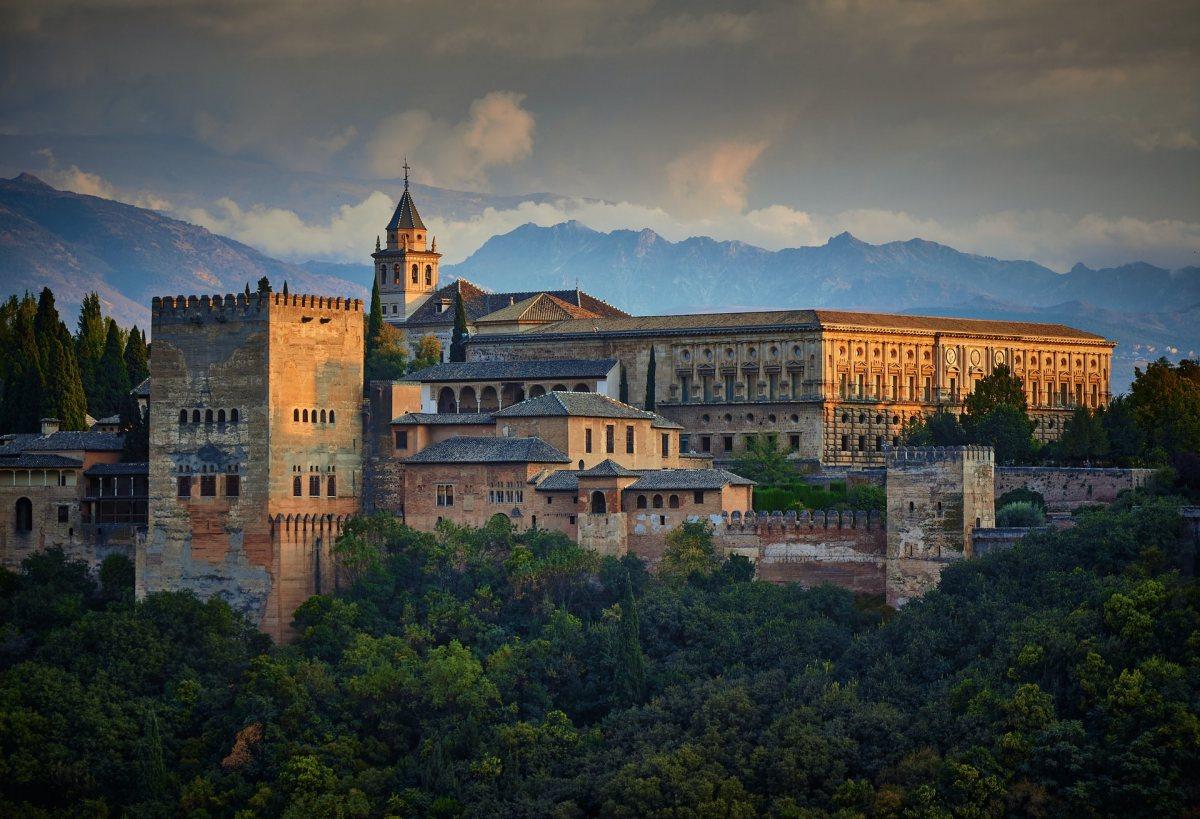
Classified as a UNESCO World Heritage Site, Alhambra means “red palace” in reference to the color of its walls. Surrounded by walls, the palace has several buildings and gardens from different periods of history.
The Alhambra has 4 main parts: The Alcazaba which is the fortress; the Nasrid Palaces which are the most important palaces of the monument; the Palace of Charles V added by the Castilians; and the Generalife which is the summer villa of the sultans with its gardens.
7. Alcázar de Sevilla
Located in the historic district of Santa Cruz, the Alcazar of Seville is a fortified castle composed of different palaces, courtyards, patios, and beautiful gardens.
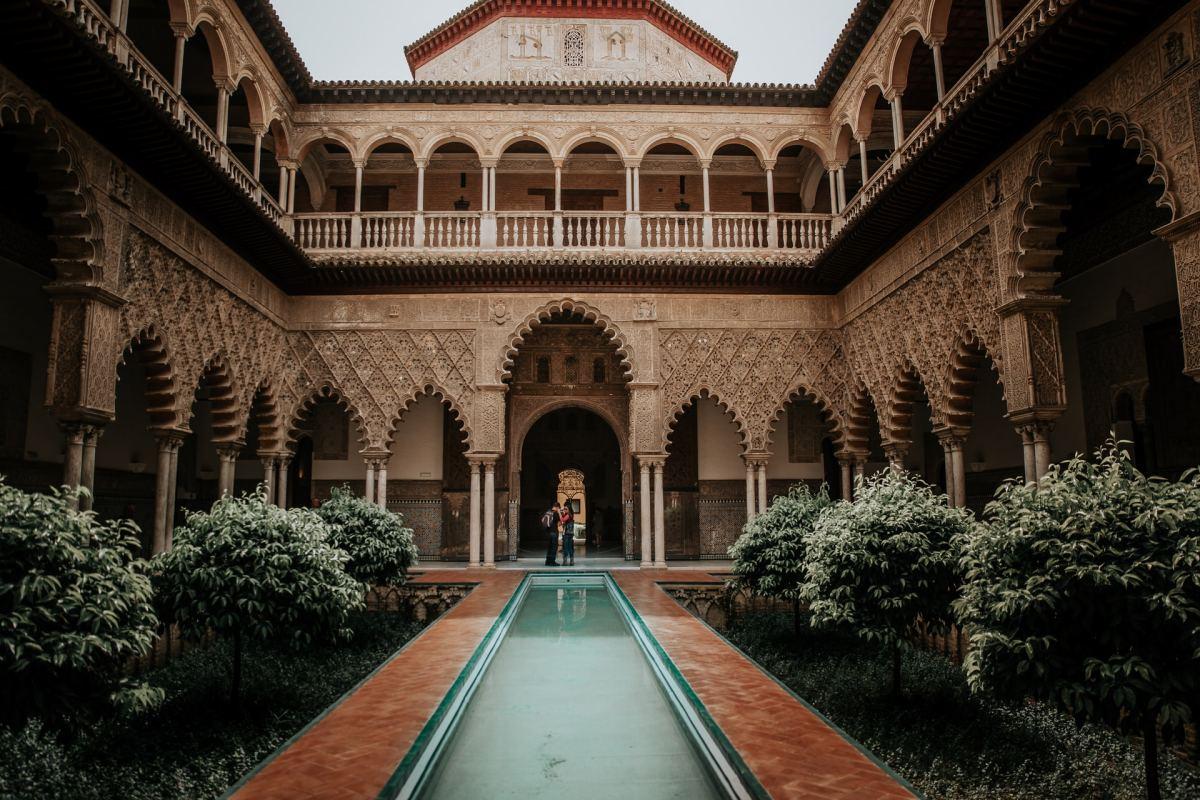
Built by the Umayyads of Spain from 844, the castle is of Mudejar style, an architectural style with many influences from Moorish and Christian cultures. Listed as a World Heritage Site, it was remodeled and expanded many times afterwards.
Fun fact: it’s probably the oldest palace still in use in Europe since King Felipe V still resides here when he visits Seville.
Read more: Best Itinerary to Visit Seville
8. Catedral de Sevilla
Seville Cathedral, also known as the Cathedral of Saint Mary of the See, is without a doubt the most beautiful religious building in Andalusia. This church is a UNESCO World Heritage Site and is rightly considered the most important and largest Catholic building in Spain.
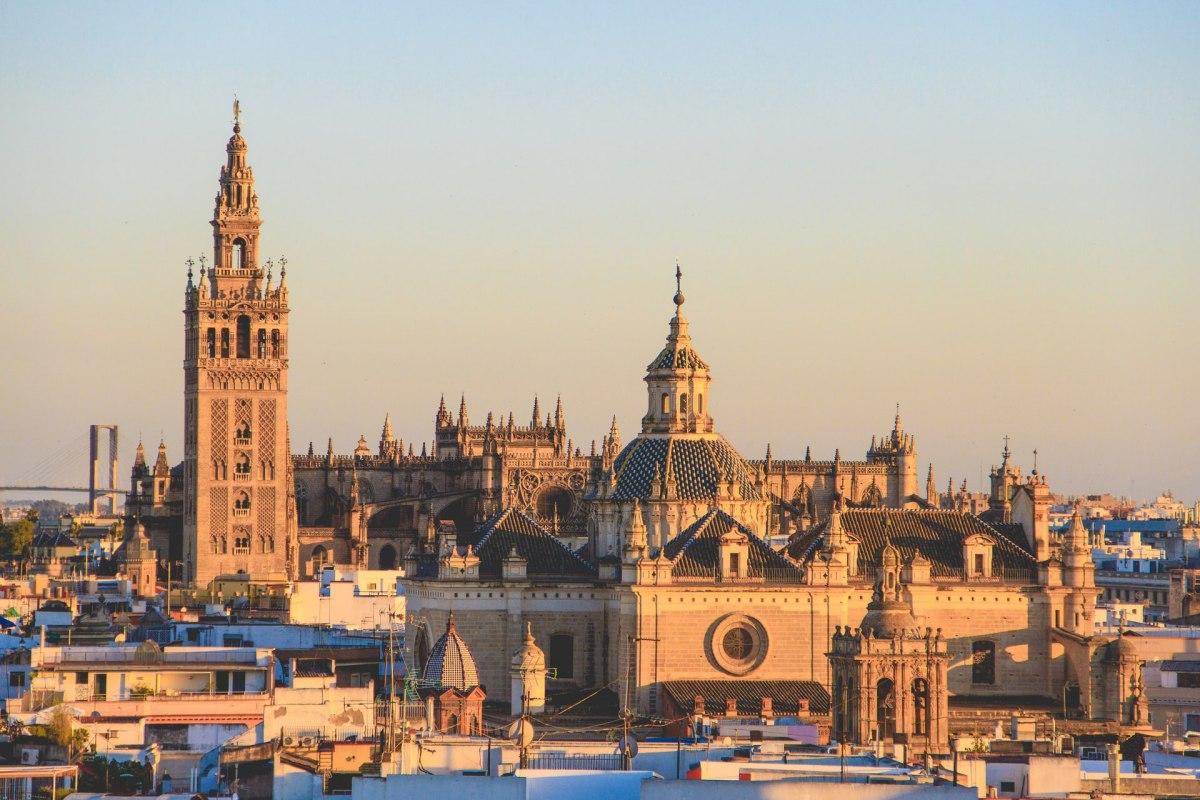
Built between 1403 and 1507 on the site where the mosque of Seville used to be, it’s now the largest Gothic church in the world. It’s so huge you simply can’t miss it when visiting Seville.
The Catedral de Sevilla has indeed impressive dimensions: it covers 11,500 m2, is 132 meters long, 83 meters wide and its highest point, the Giralda, reaches 104 meters. These dimensions make it the 3rd largest cathedral in the world after those of Rome and London.
9. Plaza de España
Located in the city of Seville, the Plaza de España is one of the most iconic landmarks of Andalusia. It’s one of the most famous landmarks Spain has to offer.
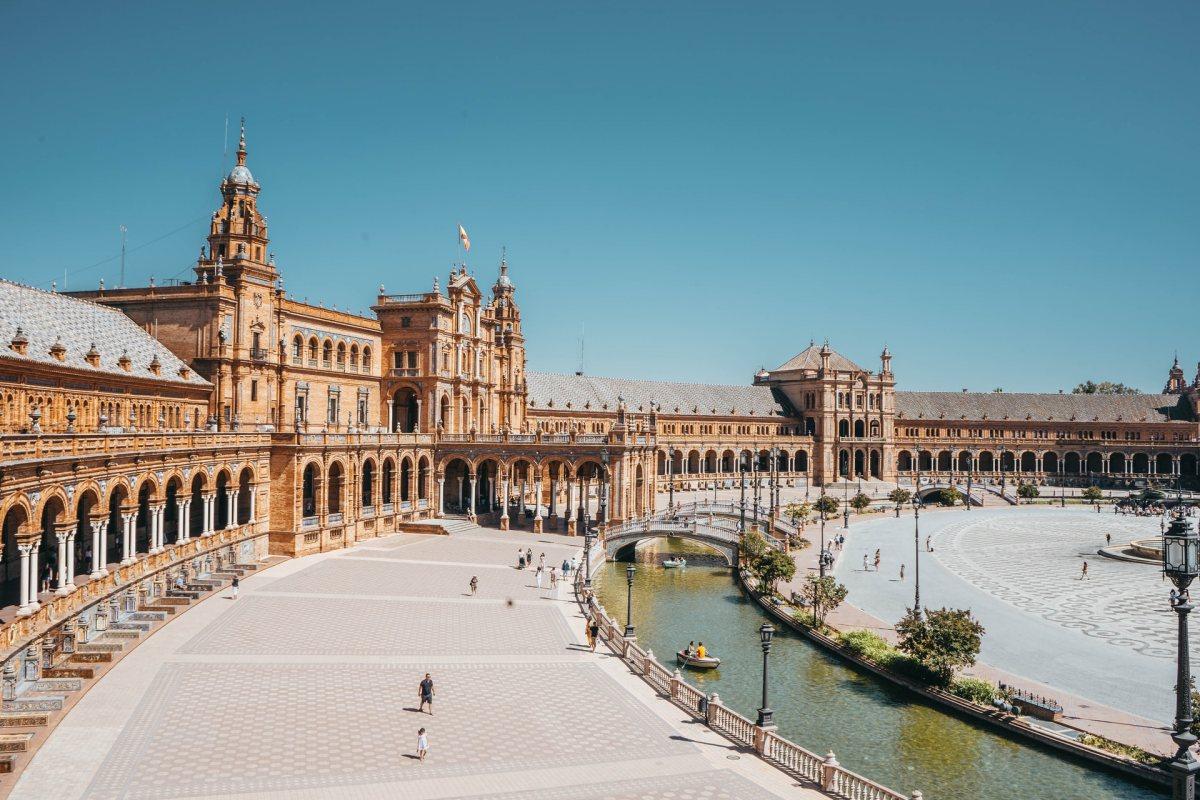
Designed by the architect Anibal Gonzalez for the Ibero-American Exposition held in Seville in 1929, the square consists of a large central palace bordered by a canal, a central fountain and the Maria Luisa Park.
The Plaza de España has been used as a decor for many famous movies and tv shows including Star Wars Episode II: Attack of the Clones and Kingdom of Heaven.
10. Puente Nuevo
Located in the city of Ronda in Andalusia, the Puente Nuevo over the Guadalevin river was built between 1759 and 1793. This impressive monument is the most iconic of Ronda.
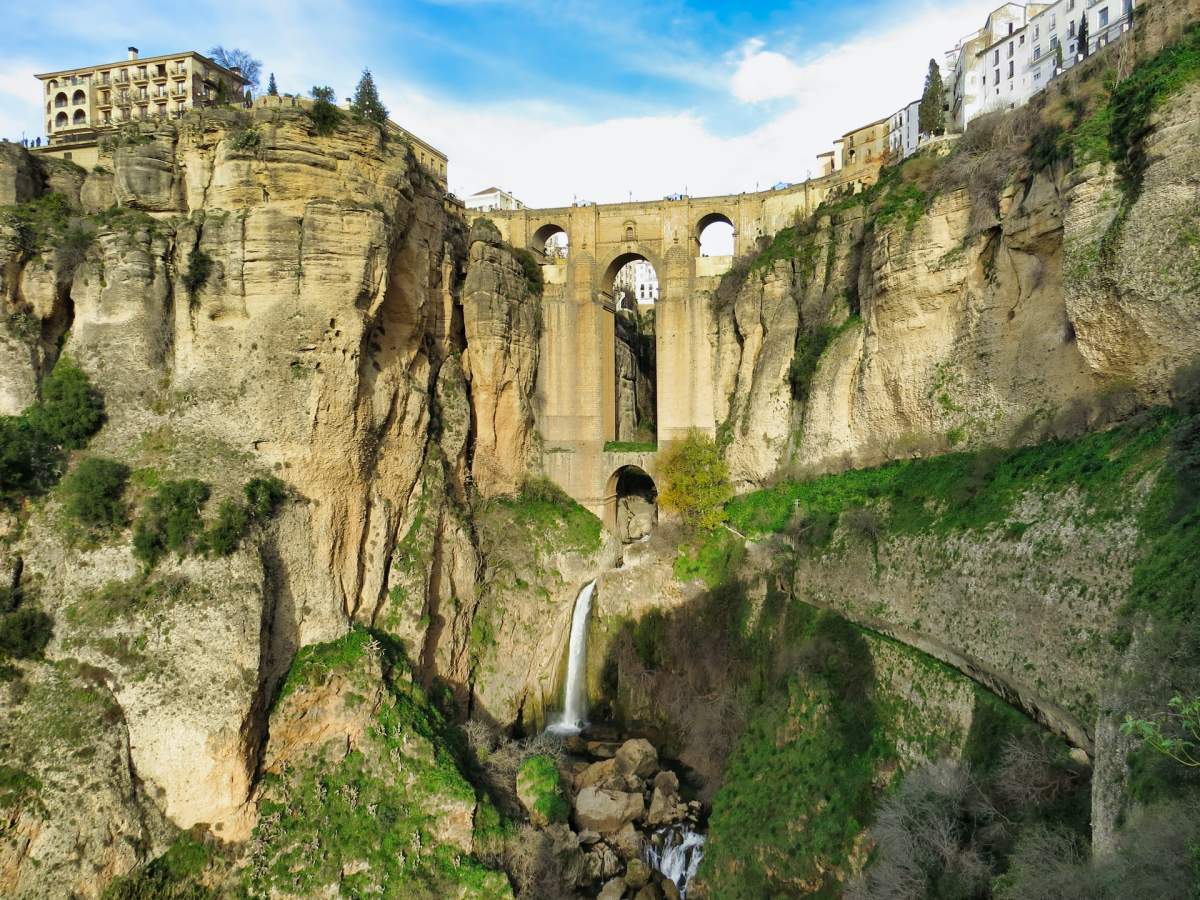
This bridge of great technical prowess leads from the modern part of Ronda to the old town. It dominates the gorge of the Tajo, which is more than 100 meters deep.
To get the best view of the bridge and take the best picture, you should follow the Calle Tenorio to the Plaza de Maria Auxiliadora. A path will take you down to the first viewpoint.
Read more: 10 Best Things to Do in Ronda
11. Alcázar de Segovia
Located in the ancient city of Segovia, the Alcazar of Segovia is the castle that is said to have been the inspiration for the tale of Sleeping Beauty.
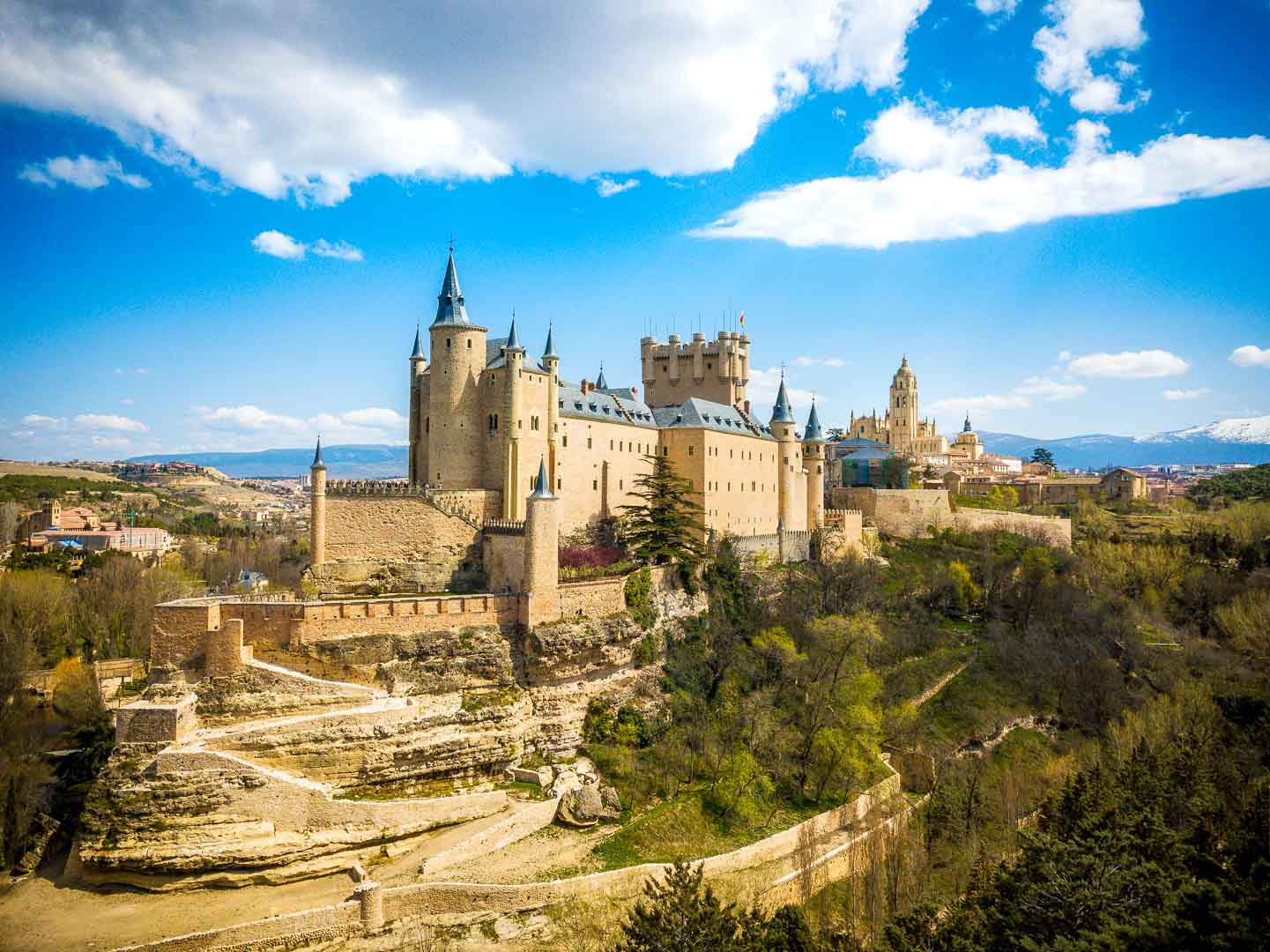
Built from 1130 in a medieval style, the palace was first used as a fortress. Later it became successively a royal residence, a state prison and finally a military academy.
With its shape similar to a ship’s bow, the Alcazar of Segovia is one of the most remarkable monuments in Spain.
Read more: Complete Guide to the Alcázar de Segovia
12. Catedral de Segovia
The Cathedral of Segovia, imposing by its size and Gothic architecture, is a must-see in the city.
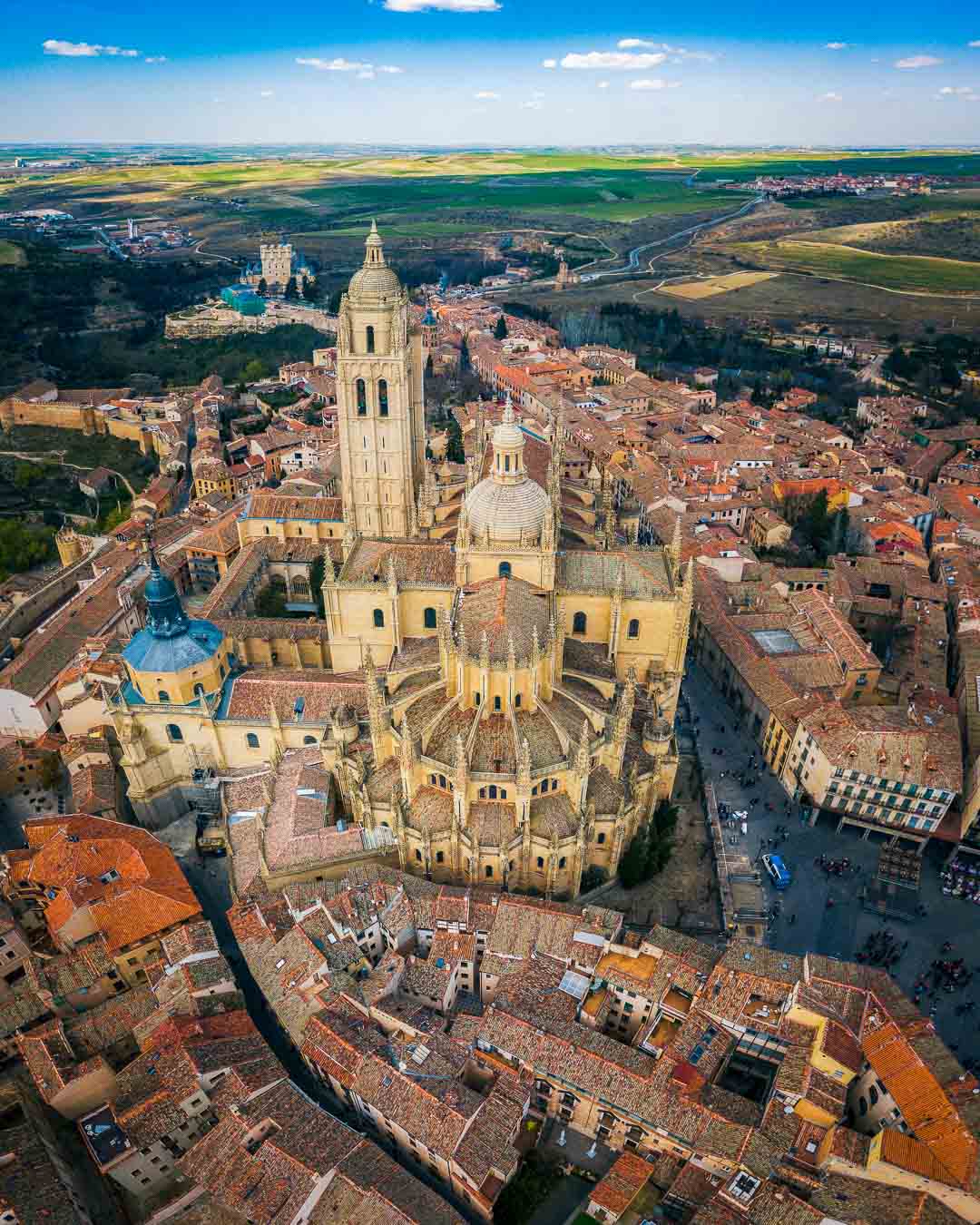
Built in the 16th century under the reign of Charles V, it’s the last Gothic cathedral built in Spain. It’s now a UNESCO World Heritage Site.
Composed of 3 naves forming a Latin cross, the cathedral has side chapels and a tower that rises to 90 meters from where you can enjoy a splendid view of the city.
Read more: Complete Guide to the Catedral de Segovia
13. Aqueduct of Segovia
Built in the 1st century A.D., the Aqueduct of Segovia is the largest Roman remains in Spain.
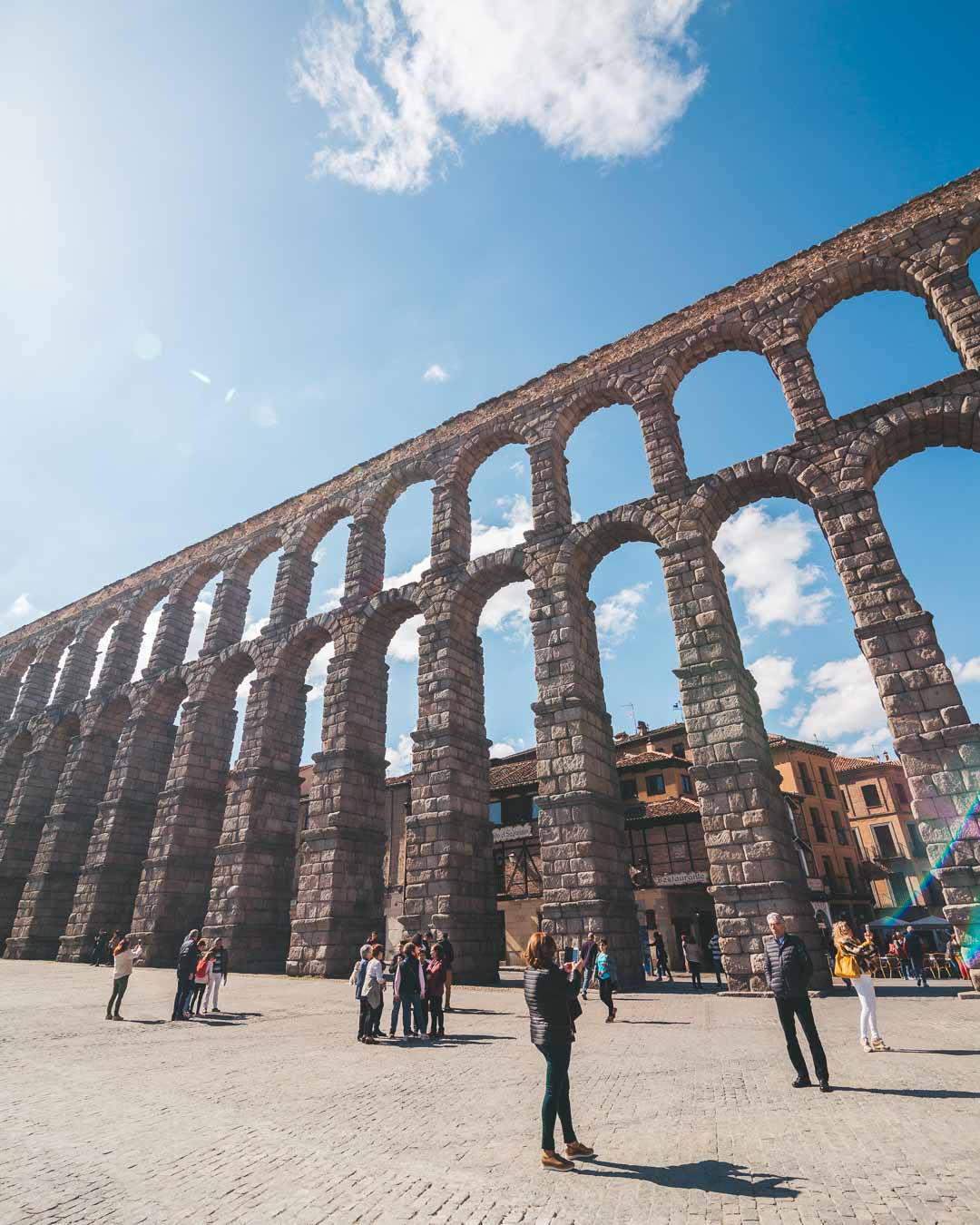
This 2,000 year old structure impresses by its 900 meters long, its 28 meters high and the 25 000 granite blocks used to build it. Moreover, the aqueduct is still in activity!
Listed as a UNESCO World Heritage Site since 1985, the aqueduct is considered one of the best preserved monuments of the Antiquity.
Read more: Complete Guide of the Aqueduct of Segovia
14. Catedral de Ávila
The Cathedral of Ávila, also known as the Cathedral of El Salvador, is the first Gothic-style cathedral in Spain.
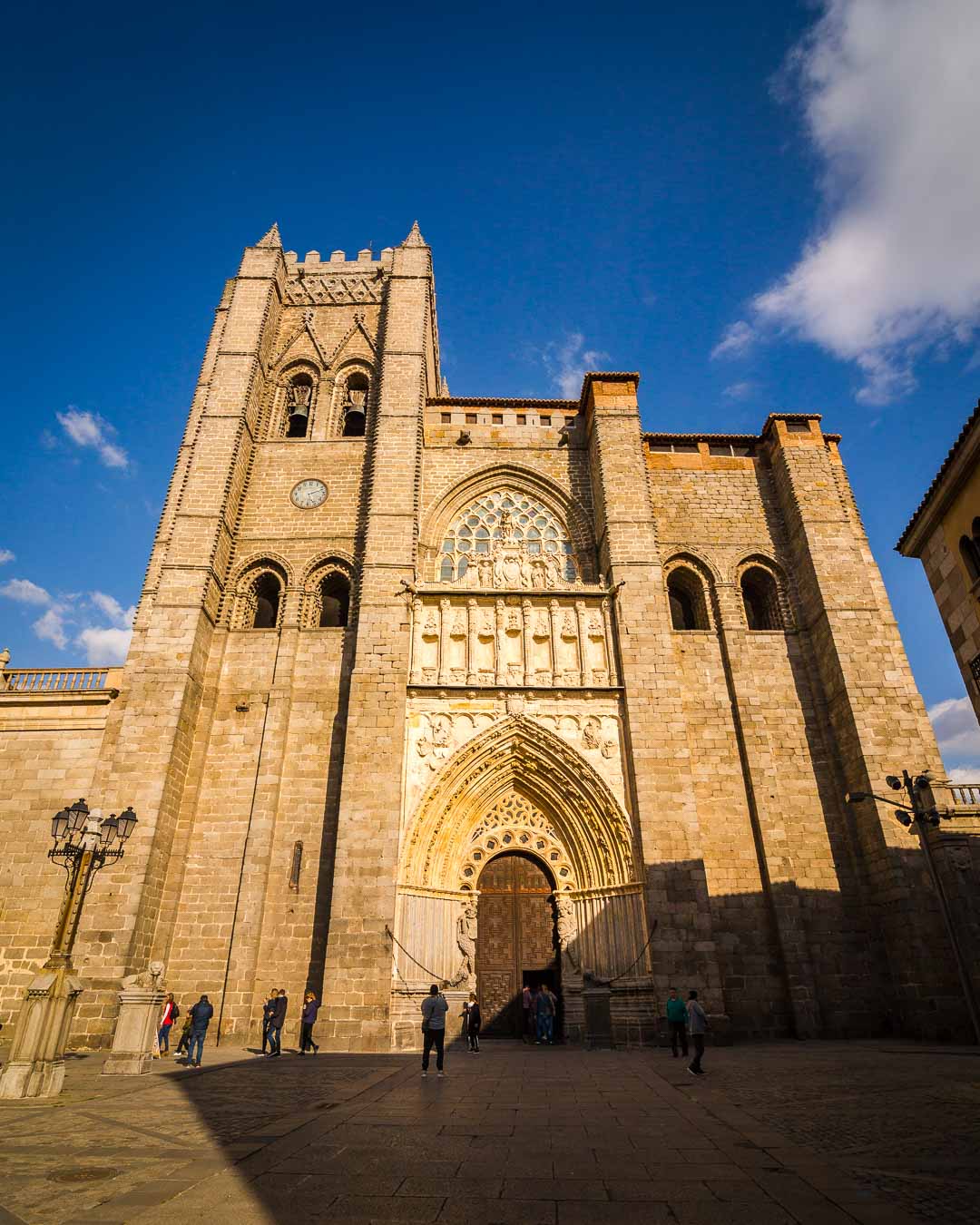
Built in the 12th century by the master Fruchel in parallel with the repopulation movement of Castile, the cathedral is both a temple and a fortress. Around it, we find different houses and palaces such as the Palacio de los Velada, the Palacio del Rey Niño and the Palacio de Valderrábanos.
The monument is integrated into the defensive walls of the city, the apse of the cathedral being part of the wall of Ávila.
Read more: Discover the Cathedral of Avila
15. Muralla de Ávila
The walls of Ávila is a Romanesque military enclosure that surrounds the entire city. This 11th century building is classified as a World Heritage Site by the UNESCO.
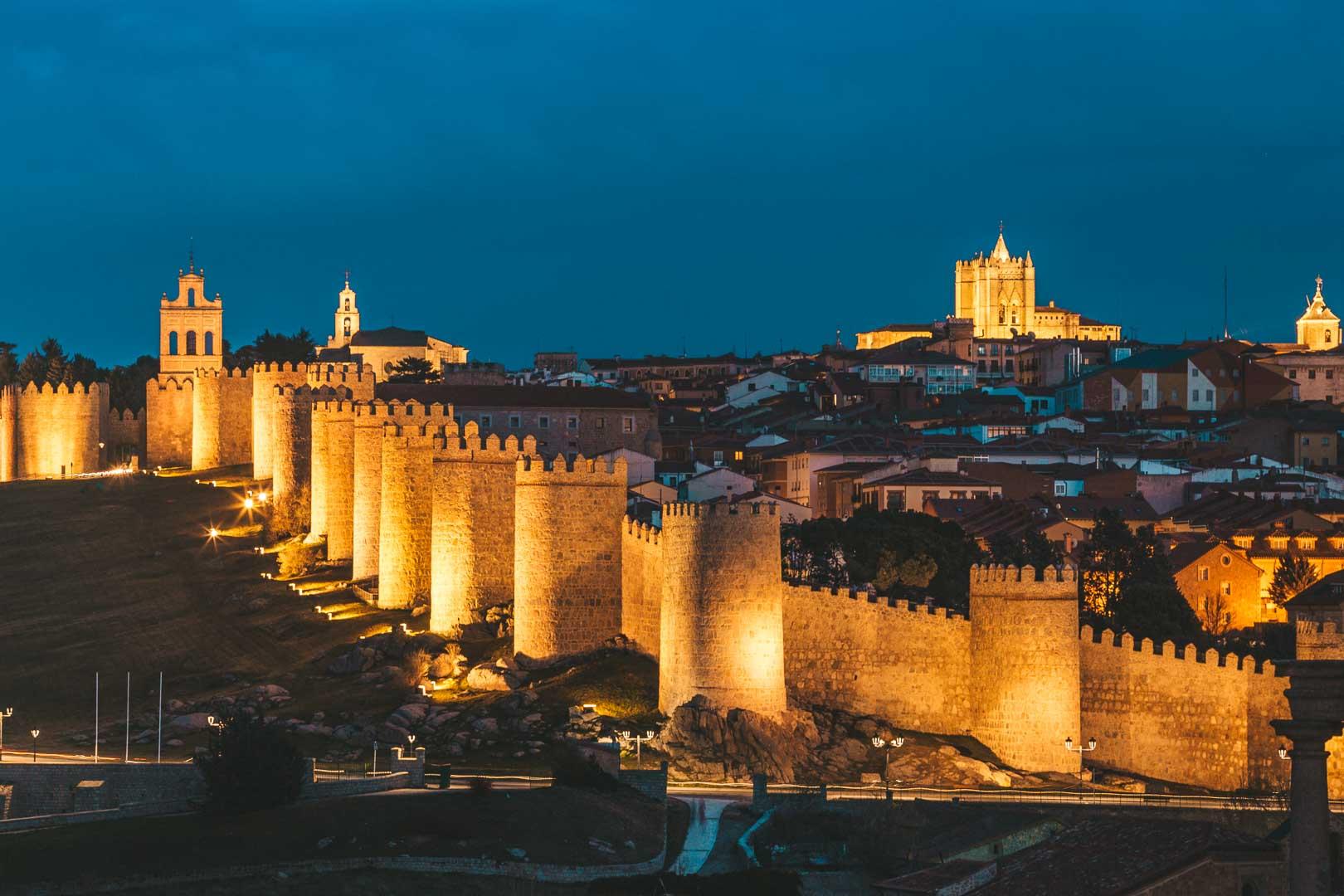
Built in the Middle Ages, the walls of Ávila were used to protect the people living in the city at a time when the military operations of the Reconquista multiplied the battlefields.
This wall also served to control the entry of goods but also of people to protect the city from diseases such as the plague.
Read more: Discover the Fortified Walls of Avila
16. Royal Palace of Madrid
In the heart of Madrid, you can visit the famous Palacio Real where tourists flock to see the changing of the Royal Guard.
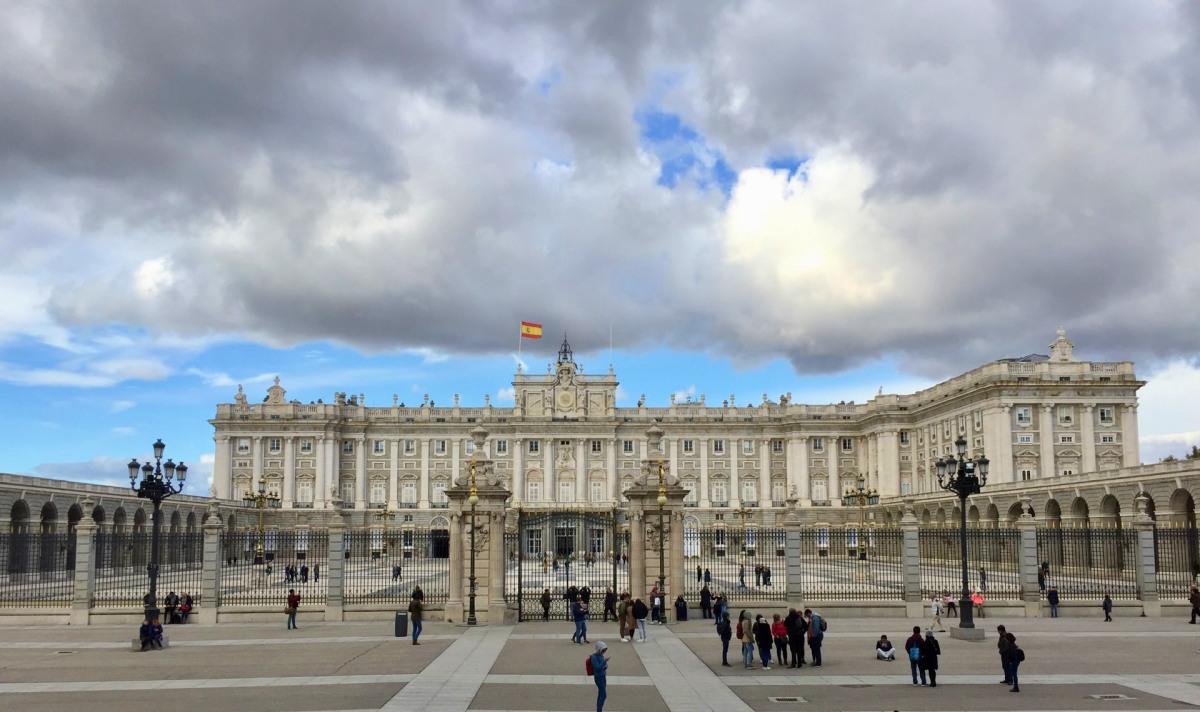
With more than 3,000 rooms and huge royal gardens, this palace is the largest in Western Europe. Although it’s officially the king’s residence, it’s actually only used for official visits, and houses a large collection of artworks.
Built in the second half of the 18th century, the Royal Palace covers no less than 135,000 square meters, which is enough to be visible in the heart of the city! It’s also one of the most visited and famous monuments in Spain.
17. Museo Nacional del Prado
Designed by Juan de Villanueva in the 18th century, the Museo Nacional del Prado welcomes more than 2.5 million visitors each year and houses lots of collections of European paintings.
The artists whose works are most present in the Prado Museum are Velázquez, Goya and Bosch. The museum also has more than 900 sculptures and 7000 paintings. There’s also an important number of other artworks and historical documents.
The Spanish monument located in Madrid is one of the largest art galleries in the world, one of the top 10 best museums in the world, and as such, a very famous landmark in Spain.
18. El Escorial
Located 1-hour drive from Madrid, El Escorial, former royal residence, has a superb monastery, a museum and a magnificent palace. It’s one of the tourists’ most favorite day-trips from Madrid.
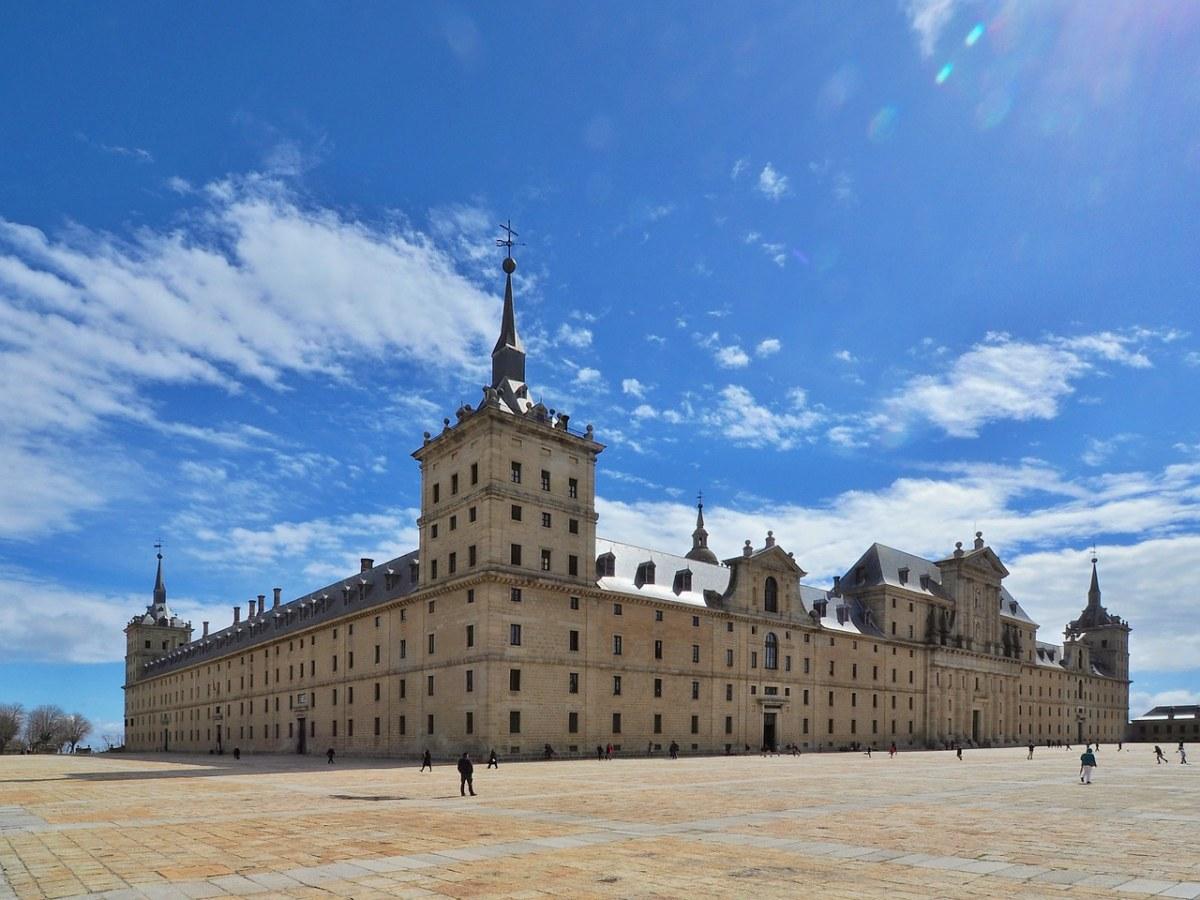
King Philip II ordered its construction in the 16th century. Its pure architecture contrasts with the plateresque style used in Spain until that time. Philip II made it a burial place for his parents, Charles V and Isabella of Portugal. Today, the palace has 26 royal tombs.
The monastery, listed as a UNESCO World Heritage Site, is also famous for its impressive collection of Catholic relics.
19. Toledo’s Old Town
Toledo, is a very charming and typical Spanish city located south of Madrid. The whole city is classified as a UNESCO World Heritage Site since 1987.
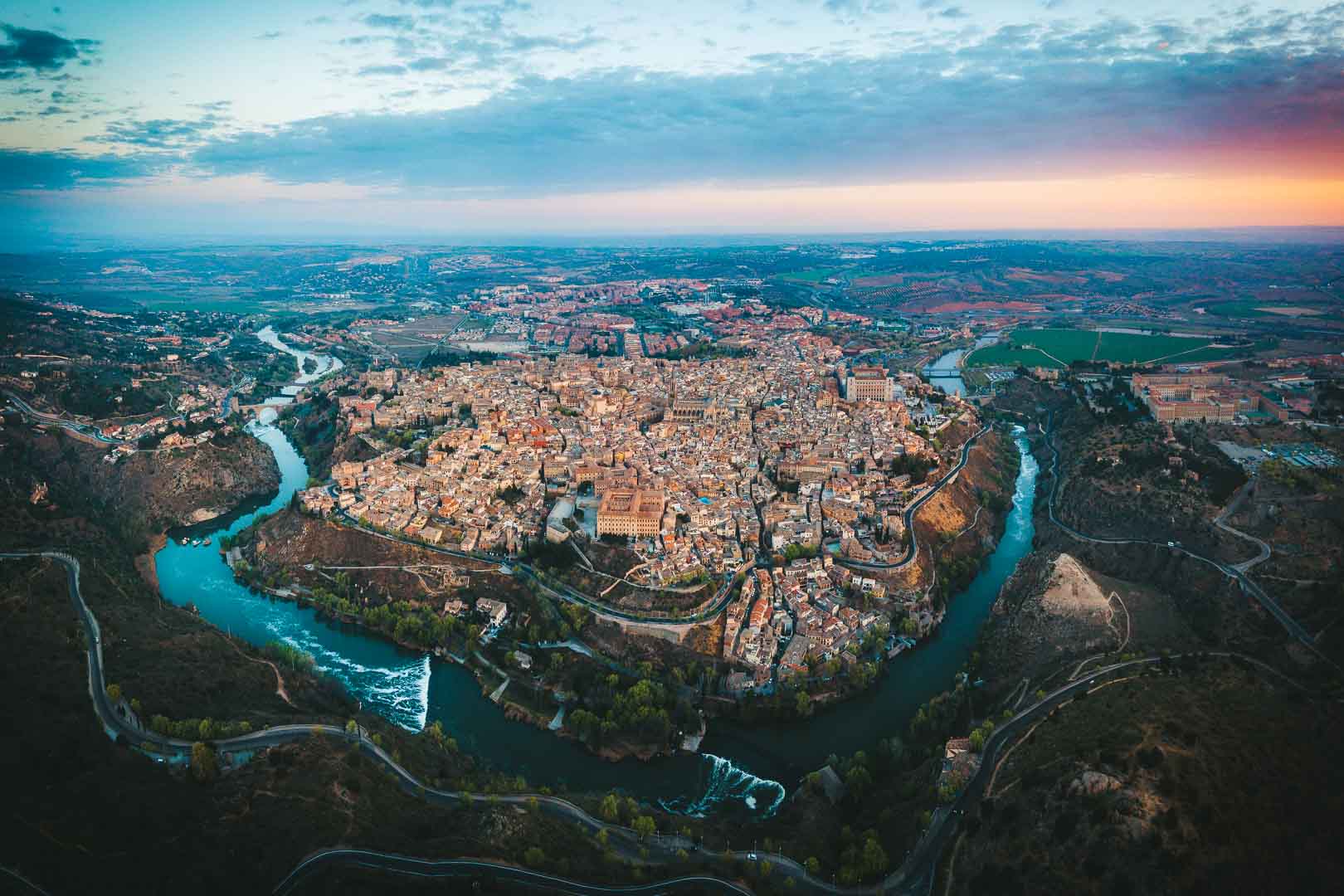
Like a city frozen in time, Toledo has a rich architectural heritage, influenced by several civilizations. The result is a special atmosphere and a variety of unique buildings.
Among the sites not to be missed in Toledo, there are:
- Alcazar of Toledo
- Toledo Cathedral
- Monastery of San Juan de los Reyes
- Puente de Alcantara
- Puente de San Martin
- Synagogue of Santa María la Blanca
- Mirador del Valle
Read more: The Best Things to Do in Toledo
20. Catedral de Santiago de Compostela
With its baroque façade, this Romanesque cathedral built between 1098 and 1738 is the rallying point of one of the greatest Christian pilgrimages in the world.
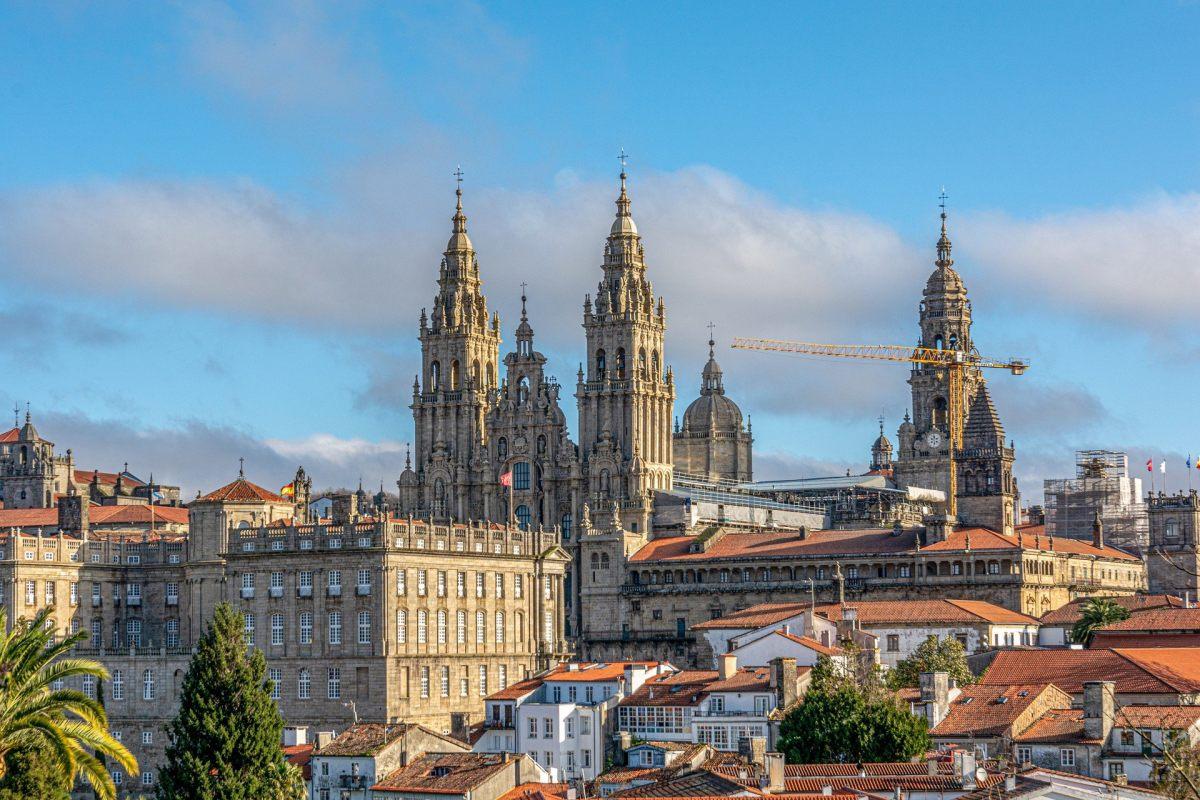
Every year, thousands of Christian hikers and other travelers from all over the world come to discover the Cathedral of Santiago de Compostela in Galicia, which contains the tomb of Santiago, the apostle who evangelized a large part of the Iberian Peninsula.
The cathedral isn’t the only jewel of the city of Santiago de Compostela, all its historic center is listed as World Heritage by the UNESCO!
21. Catedral de Burgos
Located in the city of Burgos, 2h30 drive north from Madrid, this cathedral is one of the largest in the country after those of Toledo and Seville.
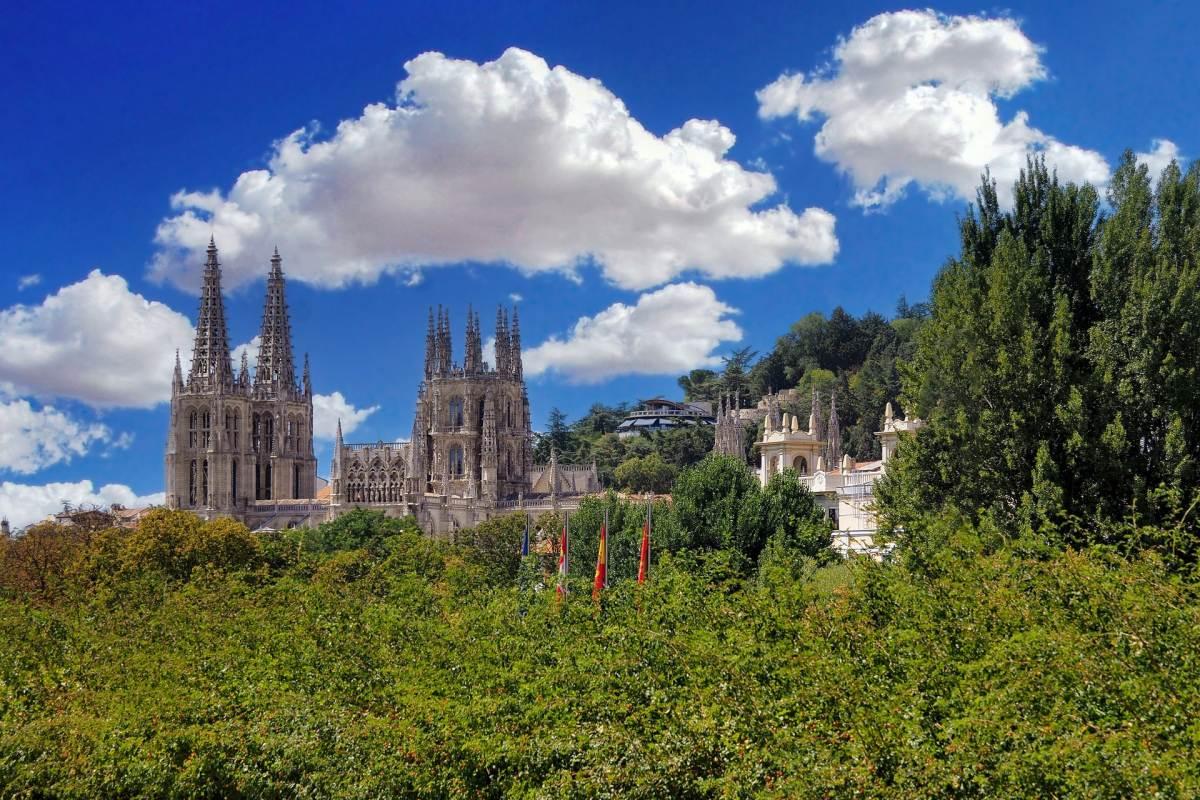
Classified as a UNESCO World Heritage Site, like most of the landmarks on this list, Burgos Cathedral is exceptional for its Gothic style. Built between 1221 and 1765, it houses Rodrigo Diaz de Vivar, a great medieval Castilian knight known as El Cid and his wife Doña Jimena.
Its different sculptures, especially the one on the Sarmental door, make it a real museum for visitors passing through the beautiful city of Burgos.
22. Guggenheim Museum Bilbao
Located in the city of Bilbao in the heart of the Basque Country, the Guggenheim Museum is a contemporary art museum designed by the famous architect Frank Gehry.
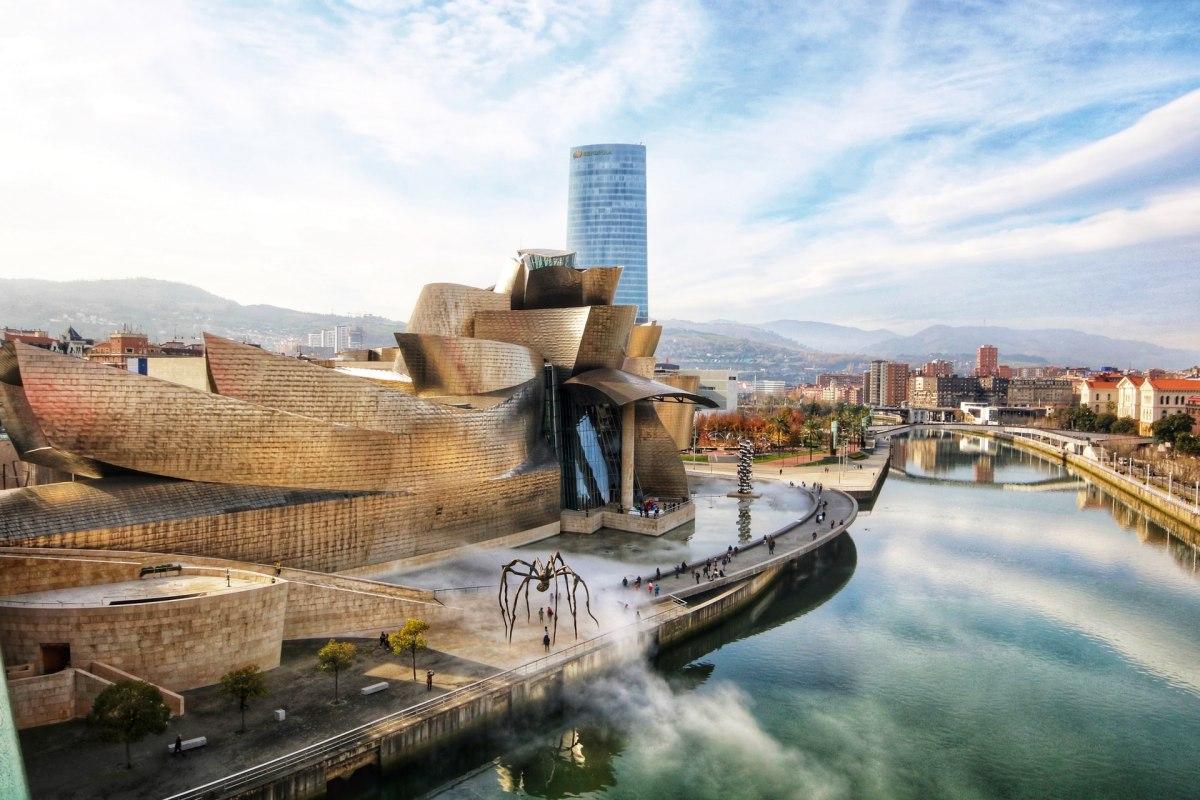
Open to the public since 1997, the museum exhibits the greatest works of Jeff Koons, Jenny Holzer and Richard Serra.
The architecture of the building is remarkable. Made of stone, titanium and glass, the museum impresses as much by its architecture as by the artworks it houses.
23. Valencia City of Arts and Sciences
Located in Valencia, La Ciudad de las Artes y las Ciencias is a futuristic cultural center designed by Santiago Calatrava and Félix Candela.
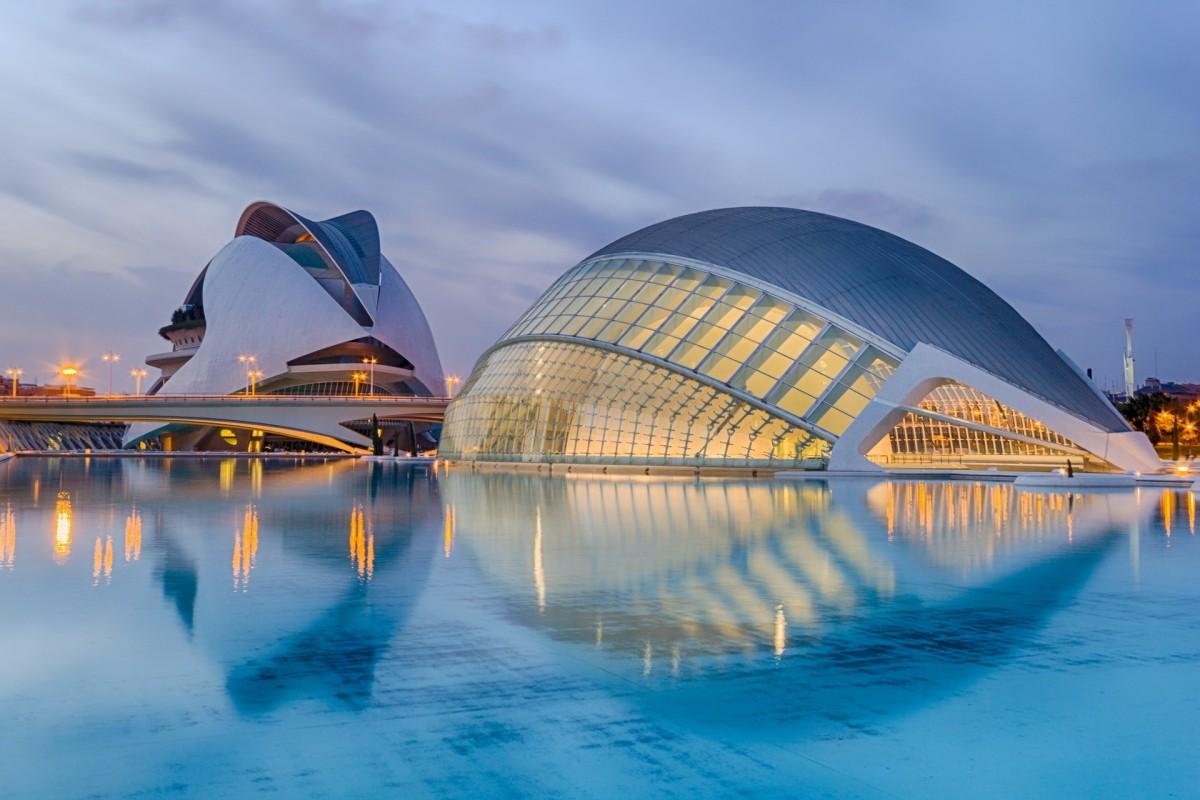
Open to the public since 1998, the complex includes the Hemisfèric which is a planetarium in the shape of an eye, as well as the Príncipe Felipe Science Museum designed in the shape of a dinosaur skeleton. The City of Arts and Sciences also houses the Umbracle, a vast botanical garden, and the Oceanogràfic, the largest aquarium in Europe.
Read more: One day in Valencia: the best itinerary
24. Mosque-Cathedral of Córdoba
Built as a mosque in 786 and then transformed into a cathedral in 1523, Mosque-Cathedral of Córdoba is without any doubt an architectural paradise where you’ll be amazed.
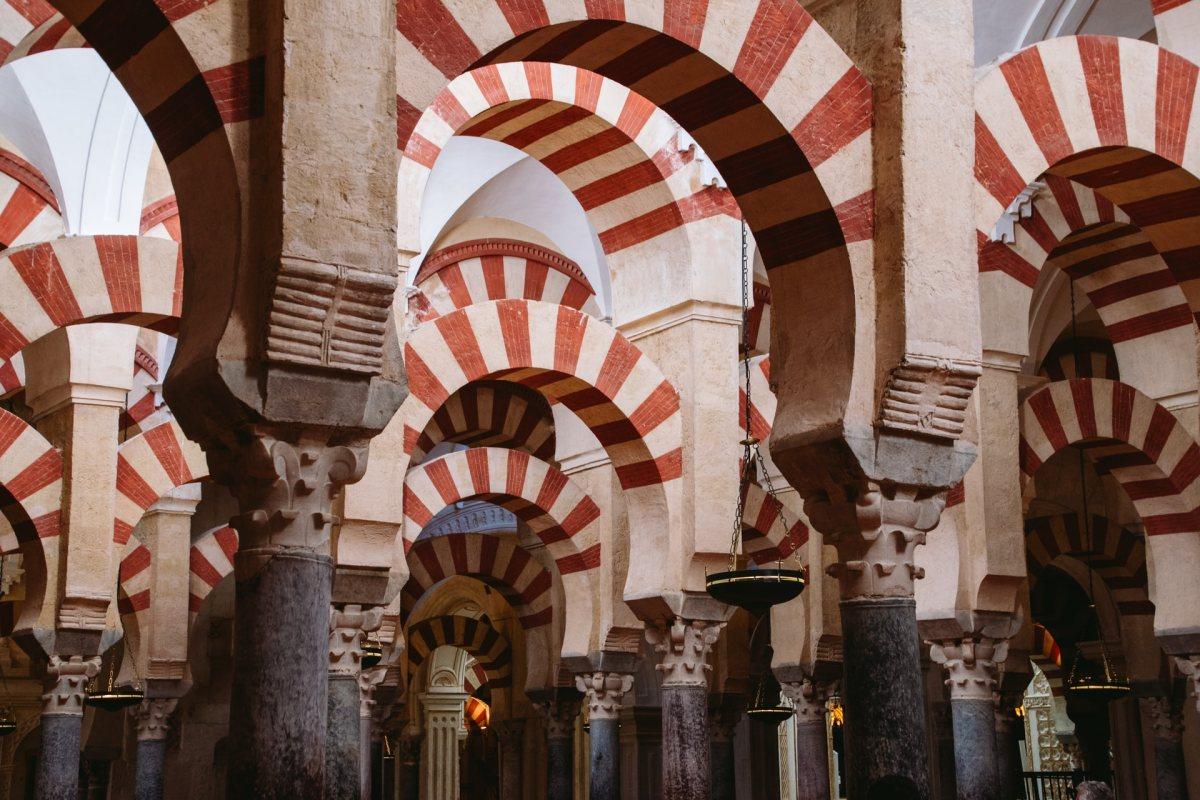
Like the Alhambra in Granada, the Mezquita of Cordoba is a major monument of the Islamic legacy in Spain. As you can imagine, it’s an important UNESCO World Heritage Site where you can admire the art of the Umayyads and their sumptuous gardens.
The building perfectly combines Gothic, Islamic, Baroque, Moorish, and Renaissance architectural styles, making it one of the most unusual and unique monuments to visit. A must when traveling Cordoba!
25. Teatro Romano de Mérida
The city of Mérida in Extremadura is home to the most important Roman archaeological site in Spain, the Teatro Romano.
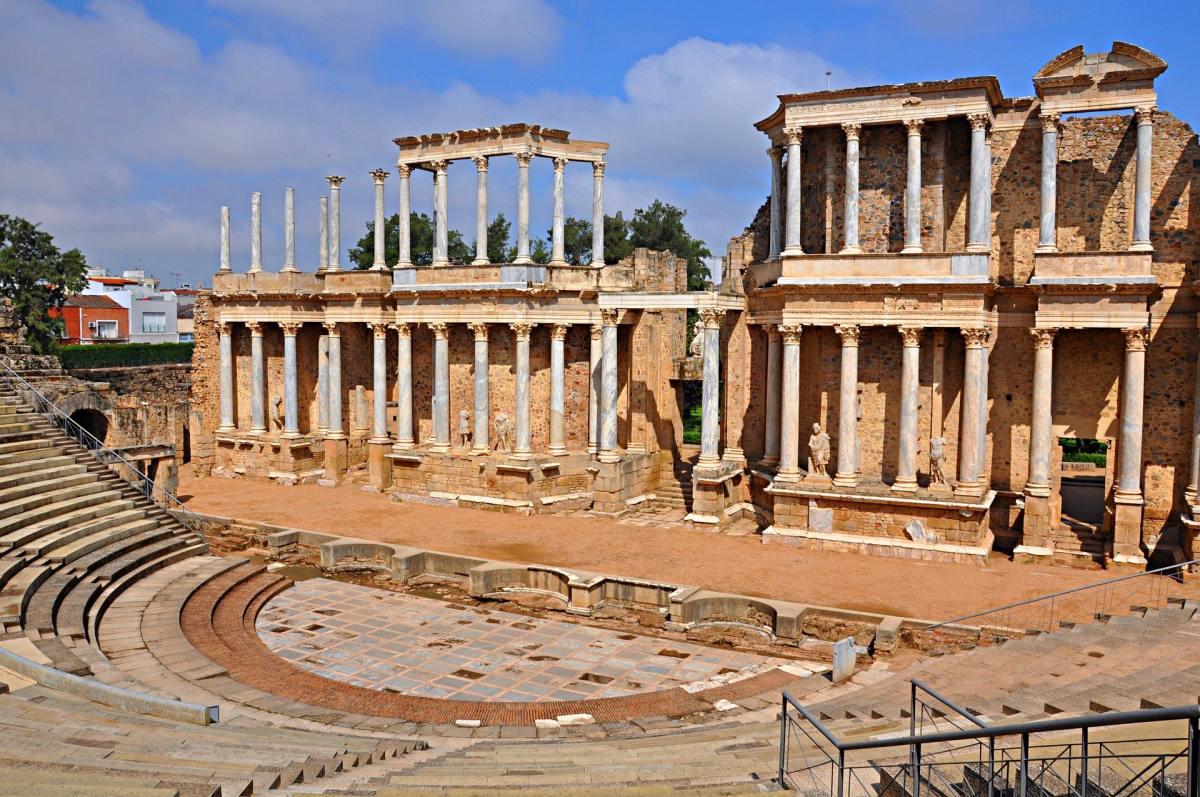
The city was once a major economic and military center during the Roman Empire. Its theater is the best preserved in Europe, making this place a very famous Spanish landmark.
The theater was built in the 15th century B.C. Like all Roman theaters, its inclination gives it excellent acoustics, still used today for shows and events in the city.
26. Castillo de Colomares
Located on the Costa del Sol in the province of Málaga, the Colomares Monument was built between 1987 and 1994 by Esteban Martin as a tribute to Christopher Columbus.
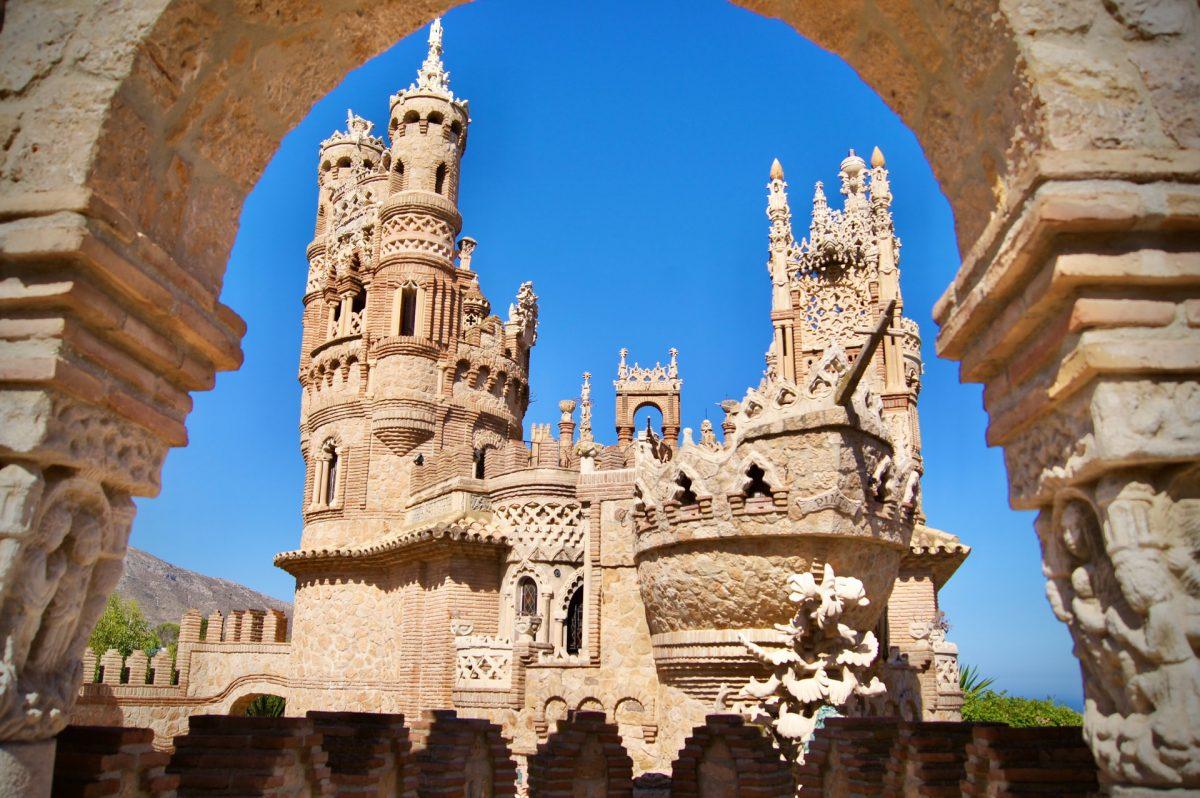
Mixing Byzantine, Romanesque, Gothic and Mudejar styles, the castle tells the story of Columbus and his discovery of America.
The castle is also known for the record of the smallest church in the world: a tiny chapel of 1.96 meters square dedicated to St. Elizabeth of Hungary is located inside the castle.
27. Castell de Bellver
Among all the wonderful sights of Mallorca, if there’s one that can’t be ignored, it’s the Castell de Bellver in Palma.
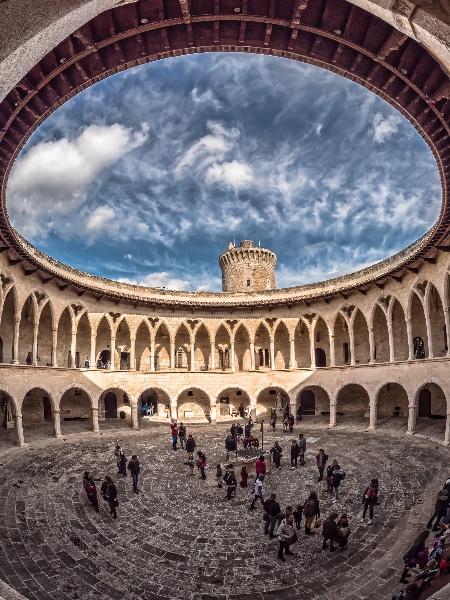
Atop a 112-meter hill, this Mediterranean Gothic construction overlooks the bay of Palma, offering a 180° view of Palma, Porto Pi and the Serra de Tramuntana mountains.
Built in 1300 by Jaume II, this palace has served as the summer residence of the kings of Mallorca, as a defensive fortress, as a place of celebration and also as a political prison.
28. Catedral de Palma de Mallorca
The cathedral of Palma de Mallorca is a gigantic monument also called Cathedral of the Seu or Cathedral of Santa Maria.
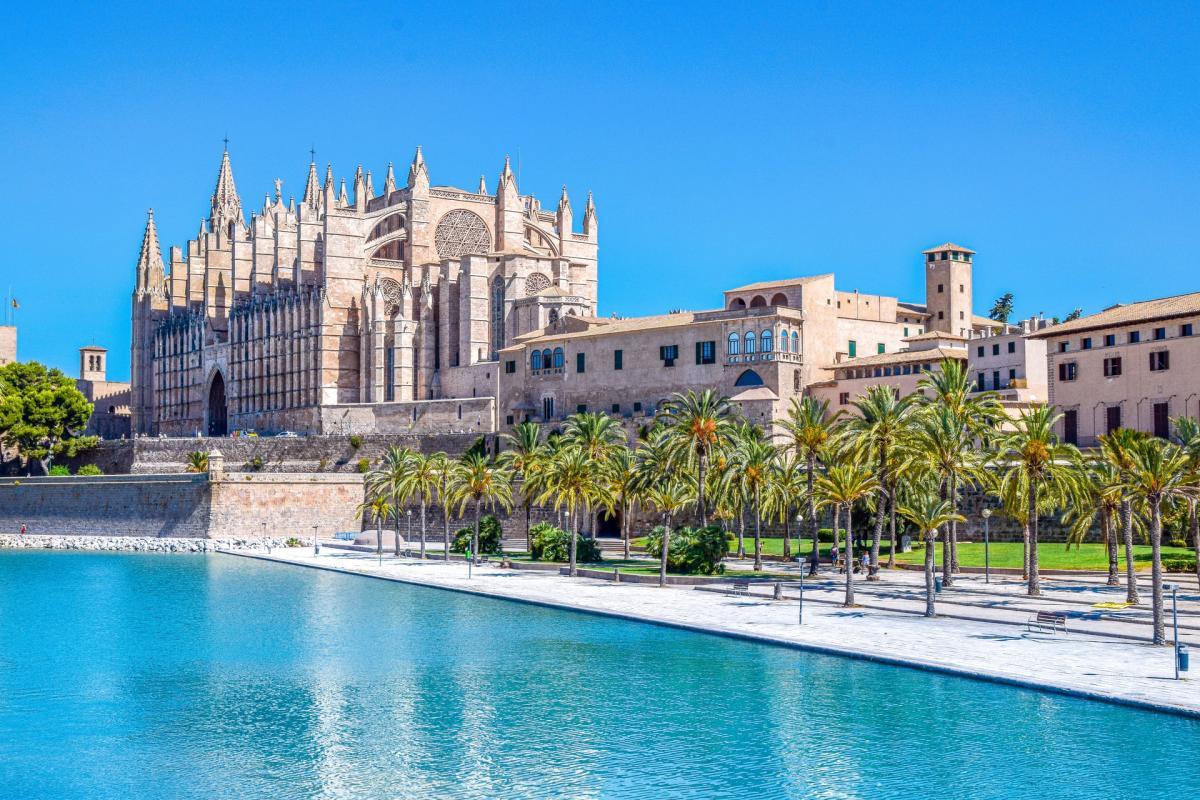
Built in the 13th century in a gothic style, the cathedral overlooks the city and was built near the Mediterranean Sea in the main city of the island, Palma.
The city itself has a very impressive historical heritage in addition to its beautiful beaches. Right next to the cathedral, you can find the Almudaina Palace that is also well worth a visit.
End of the list of the famous monuments of Spain. 🎬
I hope you enjoyed this first part of the post. Let’s move on to the second part (it won’t be too long, I promise 😉 ).
Famous Natural Landmarks in Spain
Spain isn’t only about monuments! Indeed, Spain is full of wonderful natural gems: dreamy beaches, snowy mountains, rocky mountains, red desert, volcanos… Spain has it all! In addition, the country has a very nice weather all year long, hot in summer and mild in winter, so visitors can enjoy those natural sites almost at any time.
Again, we had to stop the list at some point, so find out below 13 of the best natural landmarks you can find in Spain!
29. Caminito del Rey
Located 50min drive from Antequera, the Caminito del Rey is a vertiginous path that allows you to discover the most beautiful gorges in Spain.
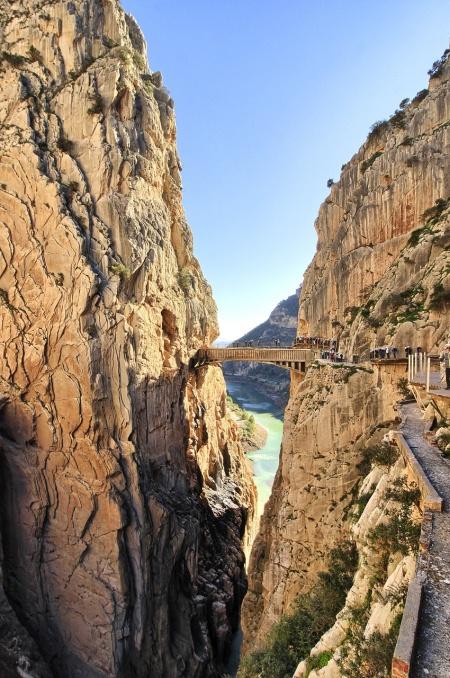
Built at the beginning of the 20th century to allow the construction of 2 hydroelectric dams, the Caminito del Rey is now a must-do activity in Andalusia.
The footbridges are fixed directly on the side of the cliffs, so the most adventurous can walk above the void. Once called the most dangerous path in the world, the Caminito del Rey can now be discovered in complete safety, thanks to the renovations made.
30. Picos de Europa
Located in Asturias, the Picos de Europa National Park is home to the highest peaks of the Cantabrian Mountain Range.
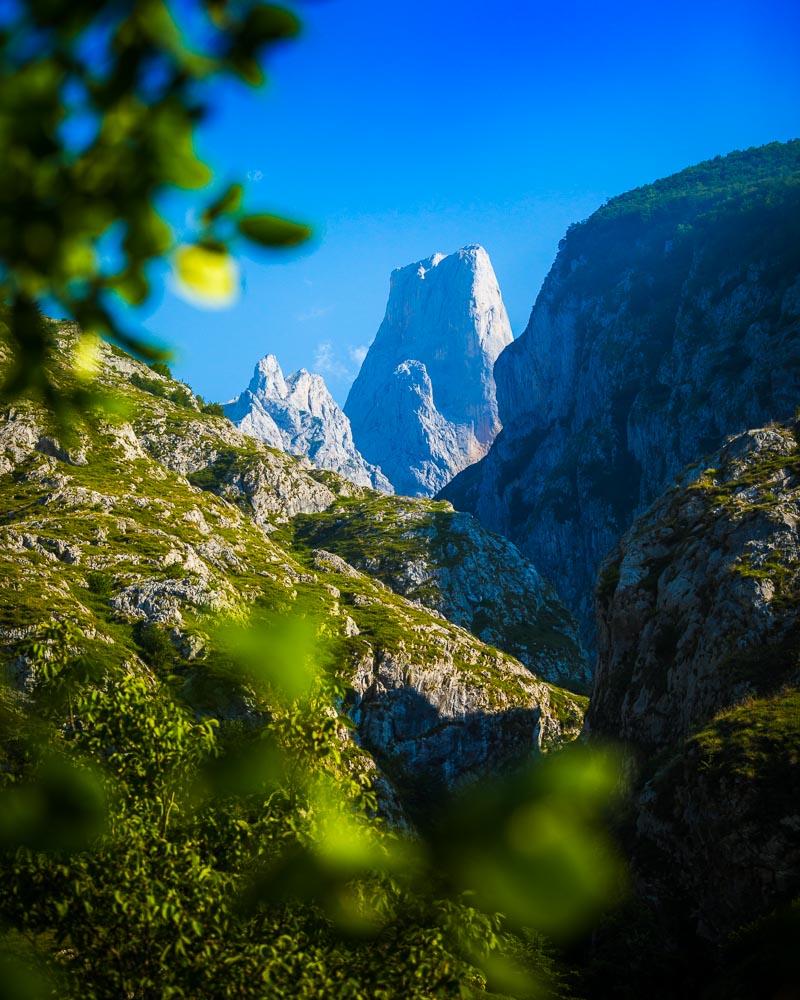
It’s composed of 3 main rock formations and offers dozens of hiking opportunities in a landscape worthy of a movie.
If you’re visiting the park, don’t miss the Naranjo de Bulnes peak, which is an incredible peak to take in photo. And if you’d have to choose only one hike to do, choose go for the Ruta del Cares, which will take you the magnificent Cares gorges.
Read more: Complete Guide to Picos de Europa
31. Somiedo Natural Park
Somiedo Natural Park is located in the municipality of Somiedo in Asturias. It’s part of a larger group of protected areas in the Cantabrian Mountain Range and Asturias.
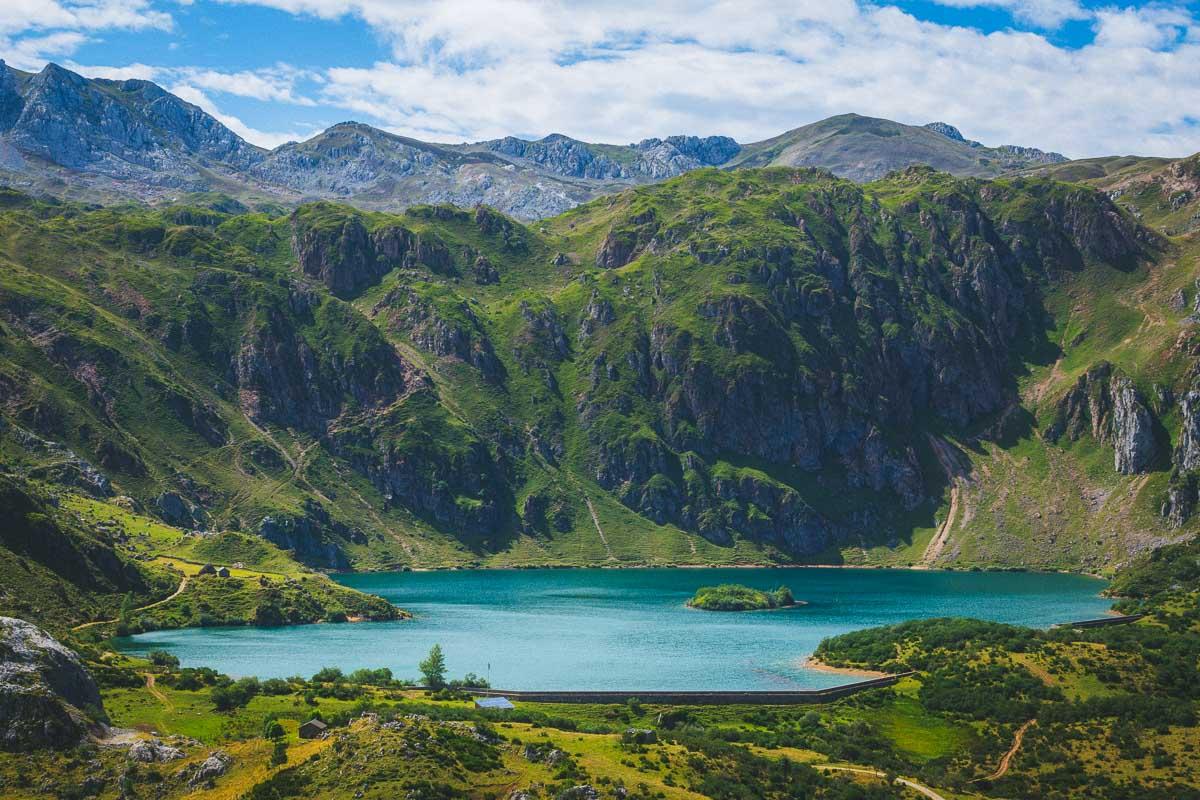
Classified as a natural biosphere reserve by the UNESCO in 2000, this park is typical of the Cantabrian Mountains. It’s mainly known as the home of the largest number of free-ranging brown bears in Europe.
The park is also home to some peaks, the highest being Comón, Peña Orniz, Sierra Pelada and Albos, as well as lakes such as the Lagos de Saliencia, or the Lago del Valle.
32. Playa del Silencio
The most beautiful beach in Spain is located in Asturias, in the northwest of Spain.
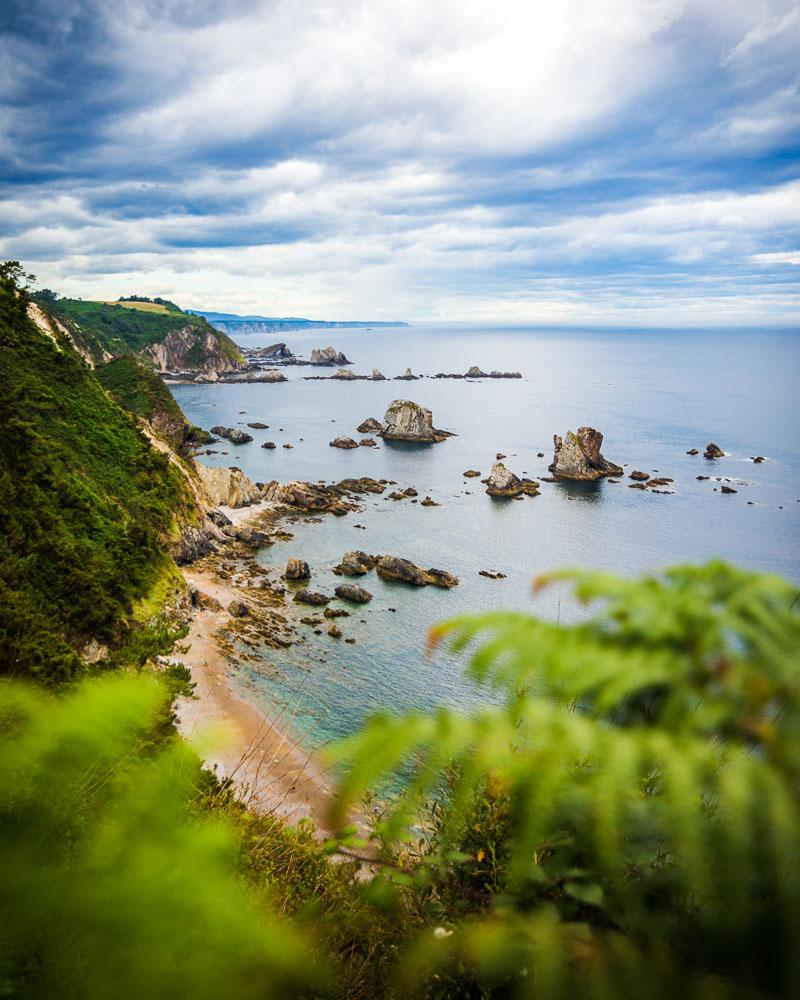
This Asturian beach is incredible both for its picturesque beauty and for its clear waters, which reflect the sky. The quietness of the place has given the beach its name: the Beach of Silence.
To get to Playa del Silencio, you have to go to the village of Novellana and then continue by car (7min) or on foot (40min). The walk is a bit long, but it’s definitely worth it: the view of the beach is breathtaking and the coast of Cudillero is beautiful, with magnificent cliffs and small islands.
Read more: Discover the Playa del Silencio
33. Montserrat
Montserrat is a multi-peaked mountain range located in Catalonia, about 60 km from Barcelona. It’s a must-do day trip if you’re in the area!
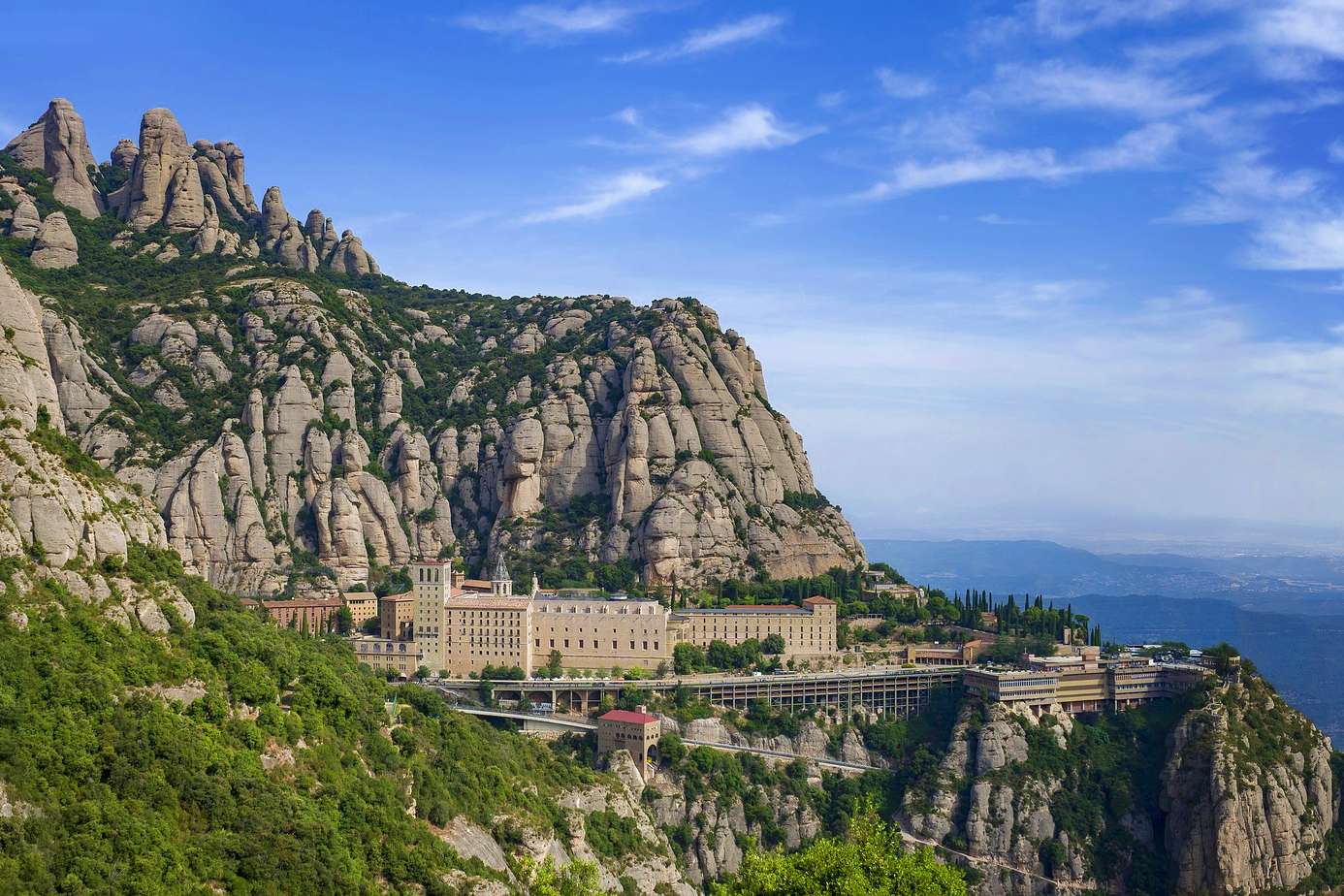
Its uncommon geological formations attracts both tourists and specialists who come to study them. The name of this mountain range is said to come from their jagged shape, “Montserrat” meaning “serrated mountain”.
But the place is especially known for the Abbey of Monserrat, an important Catholic building which enjoys a magnificent panorama on the surrounding valley.
34. El Torcal de Antequera
Considered one of the most beautiful landscapes in Spain, El Torcal de Antequera reserve in Andalusia is characterized by impressive rock formations, worthy of a miniature Grand Canyon.
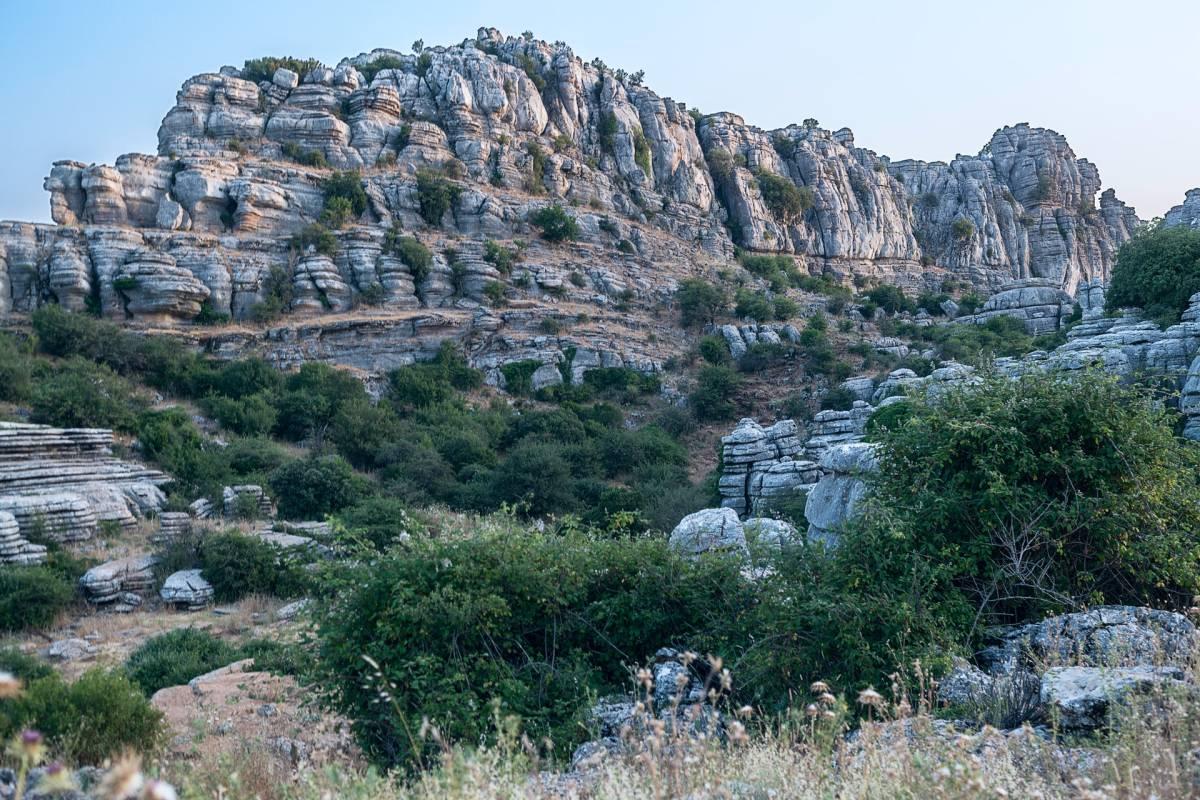
Created by thousands of years of erosion, these natural sculptures are well worth the trip. If you’re lucky when hiking in the park, you may meet some animals such as ibexes or see golden eagles.
Located an hour’s drive from Málaga, you can visit the park on a day trip if you’re staying in that city.
Read more: Full Hiking Guide to El Torcal de Antequera
35. Costa del Sol
La Costa del Sol is one of the most famous coasts in Spain, like the Costa Brava or the Costa Blanca.
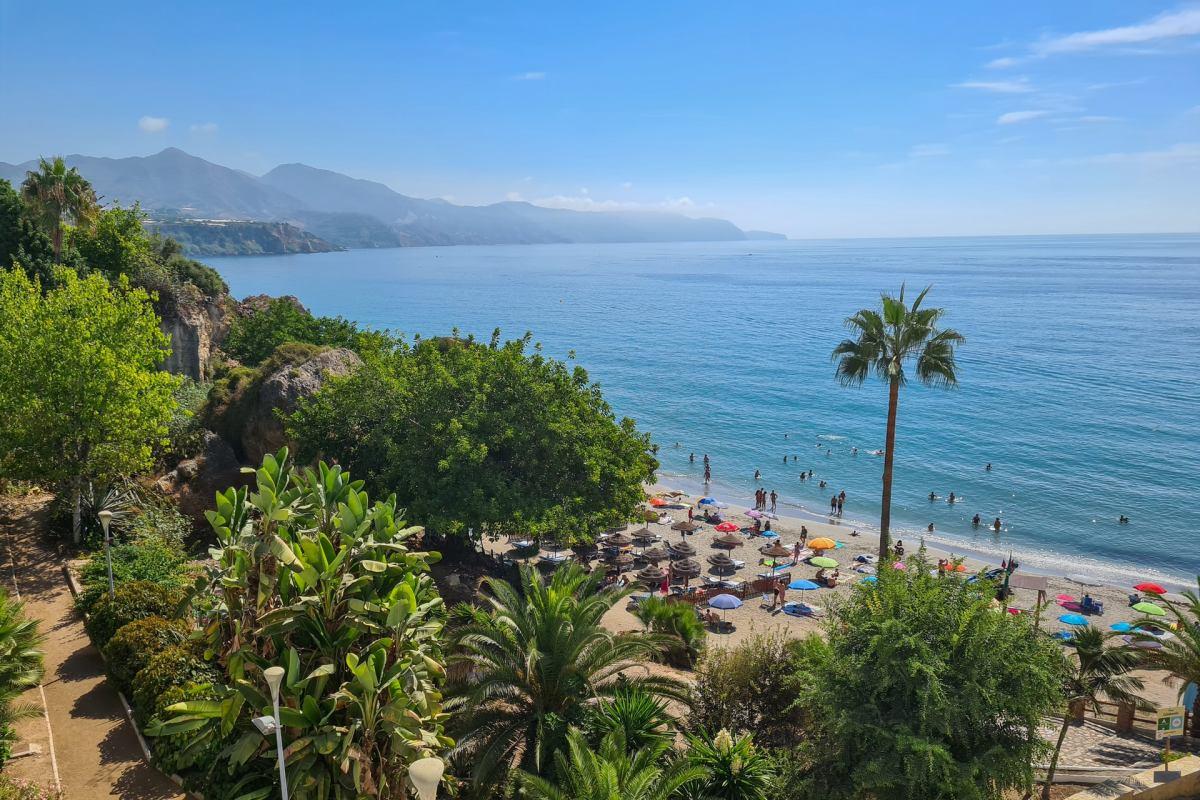
La Costa del Sol stretches over more than 400 km along the Andalusian coast, from Cádiz to Almería, through the cities of Gibraltar, Málaga and Granada.
With 330 days of sunshine per year, the region has become a top destination since the 70s. Its beautiful beaches, landscapes, historical heritage but especially its lively nights have made this area one of the tourists’ most favorite. Among the most popular resorts are Torremolinos and Marbella.
36. The National Park of Ordesa y Monte Perdido
The National Park of Ordesa y Monte Perdido is one of the most wonderful European reserves, offering exceptional walks and hikes.
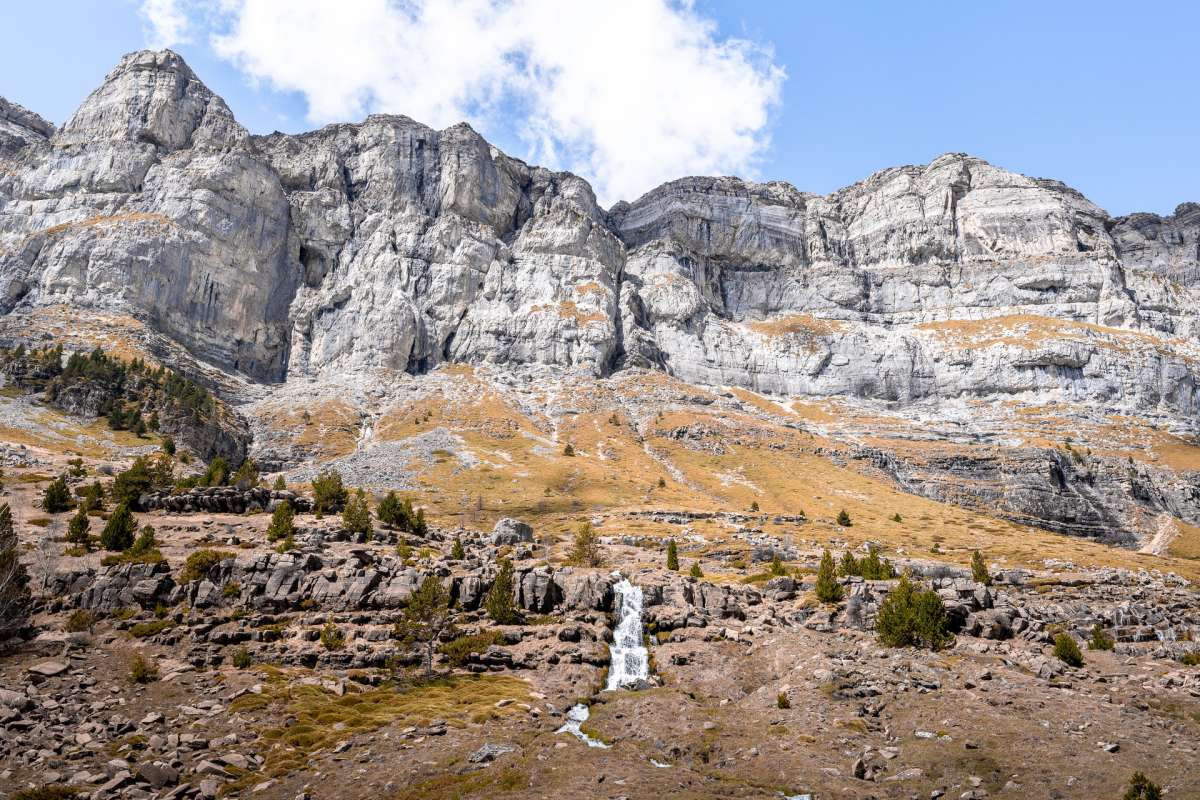
The path through the Ordesa canyon with its gigantic cliffs is one of the most incredible to hike. It follows the waters of the Arazas river, forming a succession of outstanding waterfalls.
With its canyons among the deepest in Europe, its Pyrenean valleys and waterfalls, this park is definitely one of the most beautiful natural jewels of Spain, on the border with France.
37. Bárdenas Reales
This 42,000-hectare expanse of desert located in northern Spain in the province of Navarra is the largest desert in Europe.
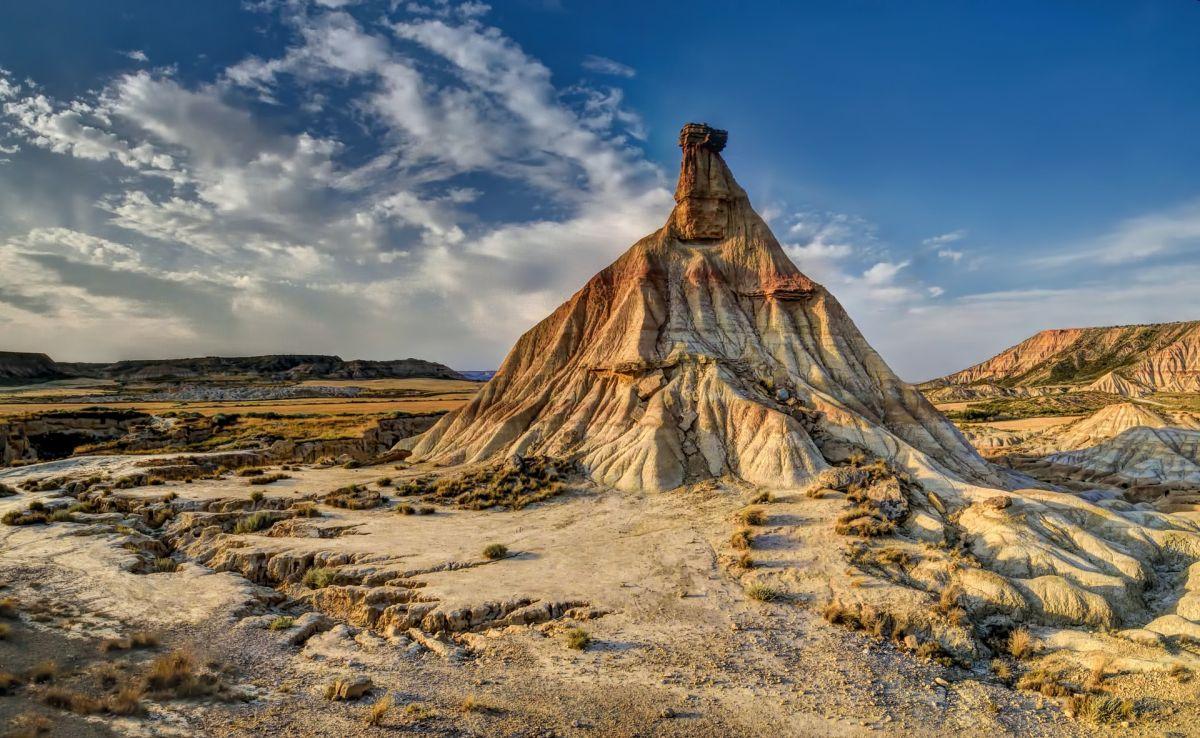
Classified as a natural reserve due to the endemic species that live there, this place also houses a military base. The Bárdenas Reales desert is divided into 4 large parts, each one so different that it seems to be elsewhere. Some of the landscapes are strongly similar to those of Monument Valley.
And for the fans of tv shows, you should know that some scenes of Game of Thrones have been shot there!
38. Tabernas Desert
The Tabernas Desert is located in the province of Almería, about 30 km north from the capital of the same name, and includes the villages of Tabernas, Gádor, Santa Cruz, Alboloduy and Gergal.
The desert is very similar to the American West: with its arid, rugged and wild landscapes, the desert has been used as a setting for more than 300 films!
Despite its semi-arid climate, this 280 km2 desert is home to many species of birds, insects, and some mammals such as foxes and hares.
39. Caves of Nerja
Discovered by chance in 1959 by a group of students looking for bats, the Caves of Nerja are among the most important caves in Europe.
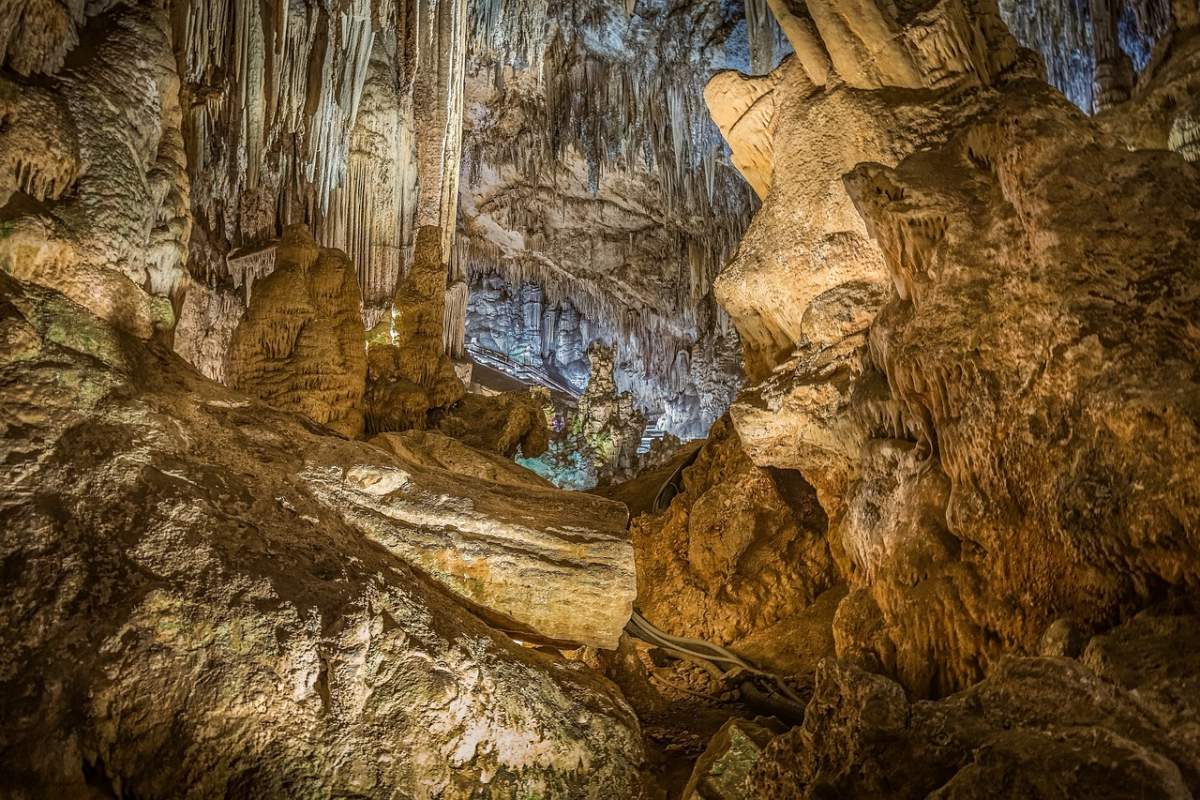
With a length of more than 7,000 meters, it’s unfortunately only possible to visit a third of them, the area of the lower galleries. If you wish to discover the other galleries, it will be in caving mode with a guide.
Located 50 km from Malaga, you can discover huge rooms, narrow passages and impressive columns of stalactites and stalagmites.
40. Las Médulas
Located in the northwest of Spain, Las Médulas is a beautiful red sand mountain. It’s one of the oldest Roman gold mining areas.
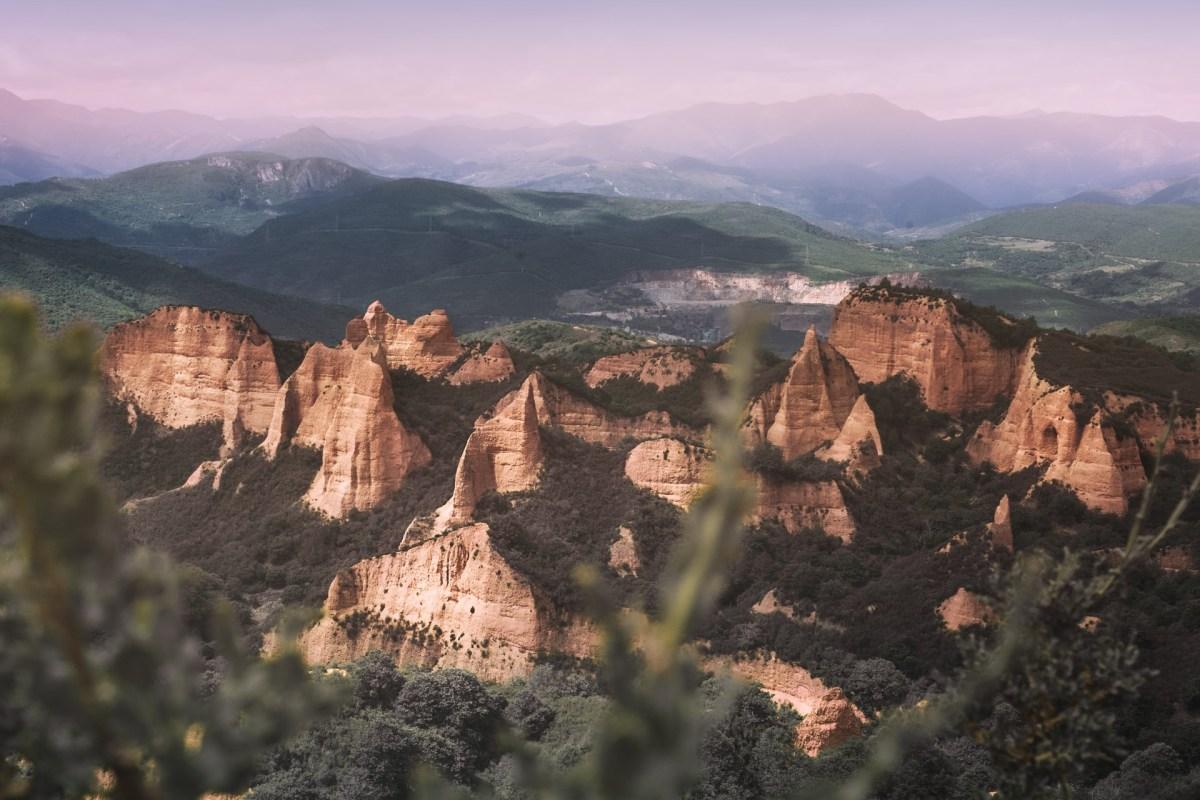
Recognized as a UNESCO World Heritage Site in 1997, visitors can discover the Carucedo Lake and the Orellán Lookout from where they can enjoy a beautiful view of this particular site.
Las Médulas also offers unique hiking trails such as the Senda Perimetral, Las Valiñas, or Los Conventos
41. Mount Teide
Mount Teide is a volcano rising to 3,718 meters above sea level located in Tenerife, the largest and most populated of the Canary Islands. It’s the highest peak in Spain, and the 3rd highest volcano in the world.
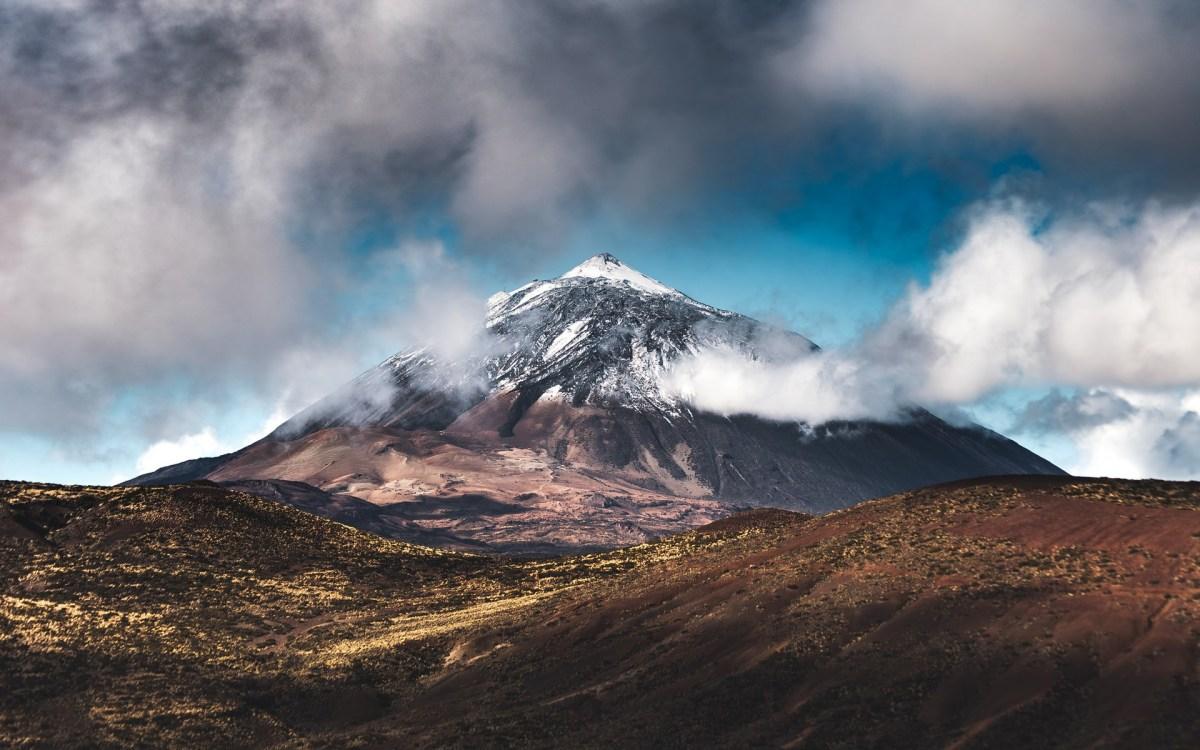
Classified as a World Heritage Site by the UNESCO in 2007, this natural wonder welcomes about 3 million tourists every year.
Among the experiences not to be missed there, we can mention the cable car ride, which is at an altitude of more than 3,000 meters! And if you’re an experienced hiker, don’t miss the 40-minute hike to the top preferably in spring or fall when weather in Tenerife is not too hot.
42. Timanfaya National Park
The Timanfaya National Park is one of the main attractions of the island of Lanzarote in the Canary Islands.
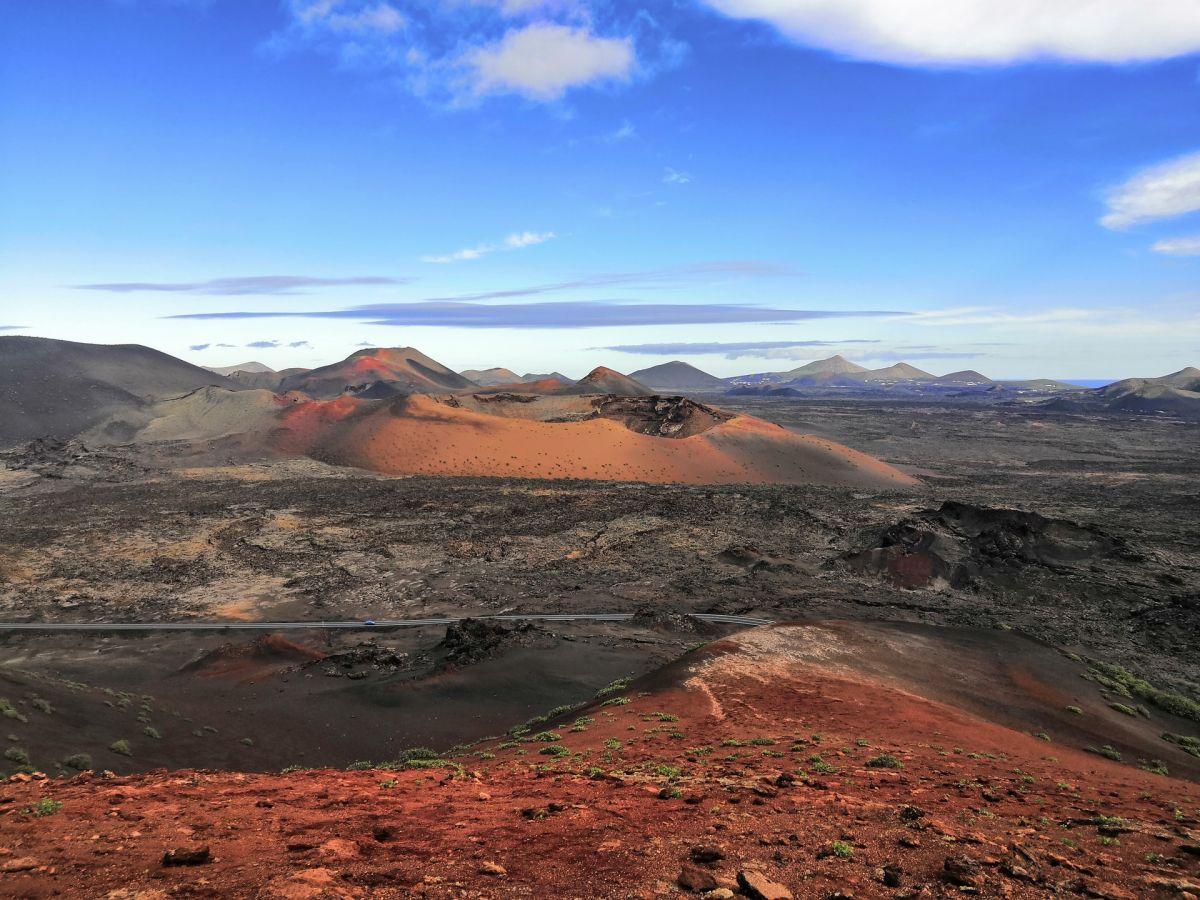
With its protected lands covered with lava and volcanic elements in all their forms and colors, visiting the Timanfaya is one of the most popular excursions in the island.
This unique landscape, similar to the Moon or Mars, is the result of volcanic eruptions that took place about 300 years ago.
Congrats, you’ve been through all these 42 landmarks! 🎉
I have one last free bonus for you just below, so keep reading 👇
Spain Landmarks Map
To get the map of the major landmarks in Spain we’ve listed on this post, simply click on the image below to open it in Google Maps. Then click on the “star” icon to save it to your own maps.
More Spanish Landmarks
Want to discover more Spain famous landmarks? Well, here are some other posts that will be useful to you!
Here’s the guide of the best landmarks in Spain’s capital city 👉 The Very Best Landmarks in Madrid
You can also find here the best landmarks in Spain’s 2nd largest city 👉 The Very Best Landmarks in Barcelona
And if you’re visiting Spain, here are some travel guides that might help you:
- Guide of the Best Castles in Spain
- The Best Day Trips from Madrid
- Best Things to Do in Asturias
- Beautiful Andalusian White Villages to Visit
And for even more, you can check all our Spain travel guides!
Loved this post? Share it with your friends by using the buttons below, I’m sure they’ll love it! 😁
Travel Tools
Use any of our recommended links below to book your trip. You pay the same, and we earn a small fee; a great way to support us!
Pin this to Pinterest!
Enjoyed this guide? Then help a fellow traveler and pin it! They'll most definitely love you for it, 100% guarantee.
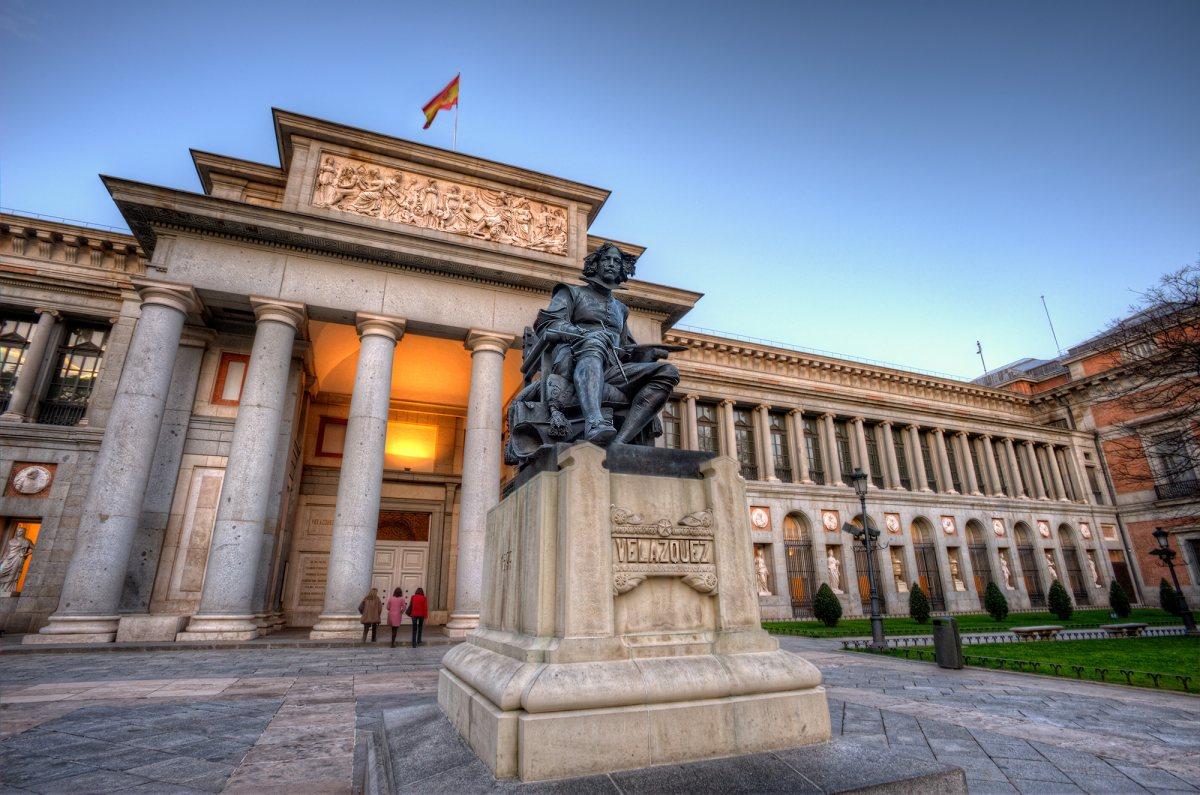
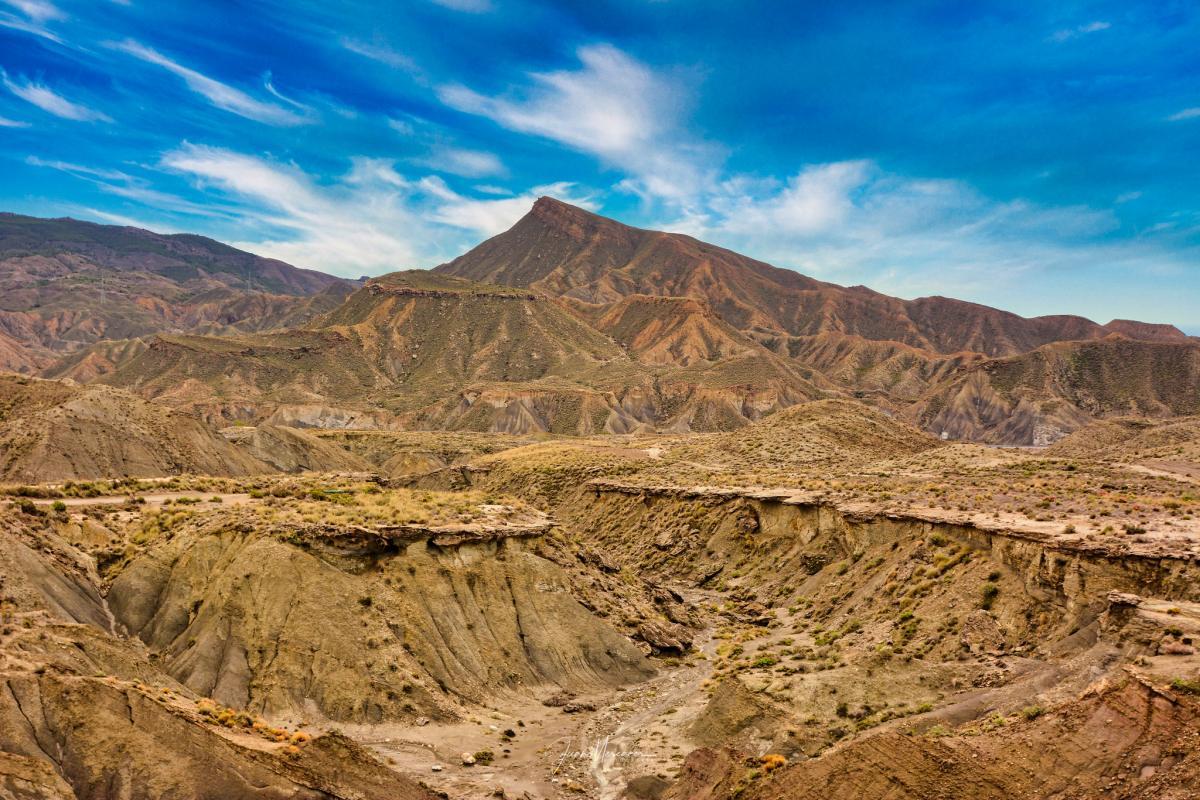
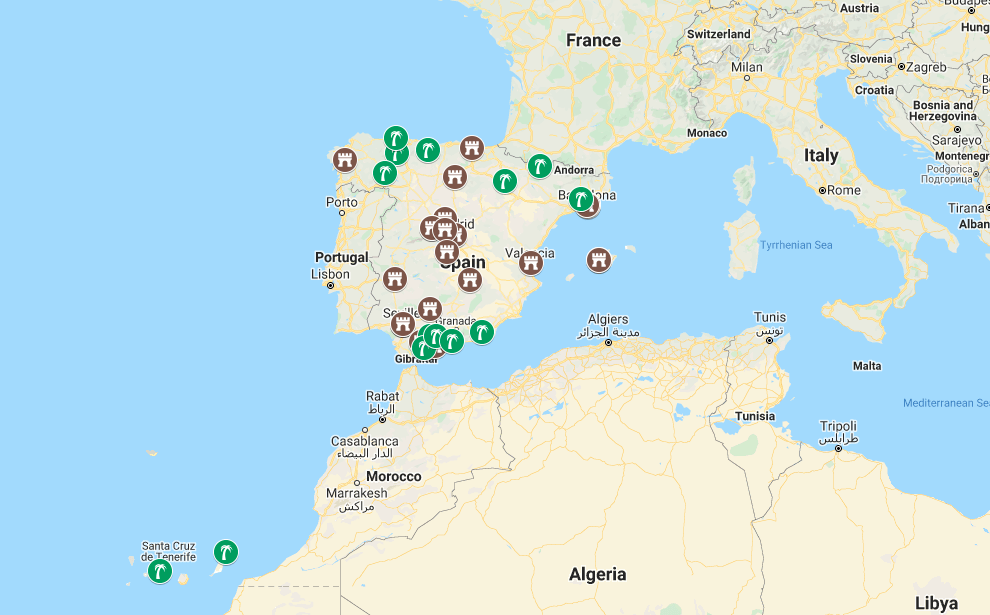
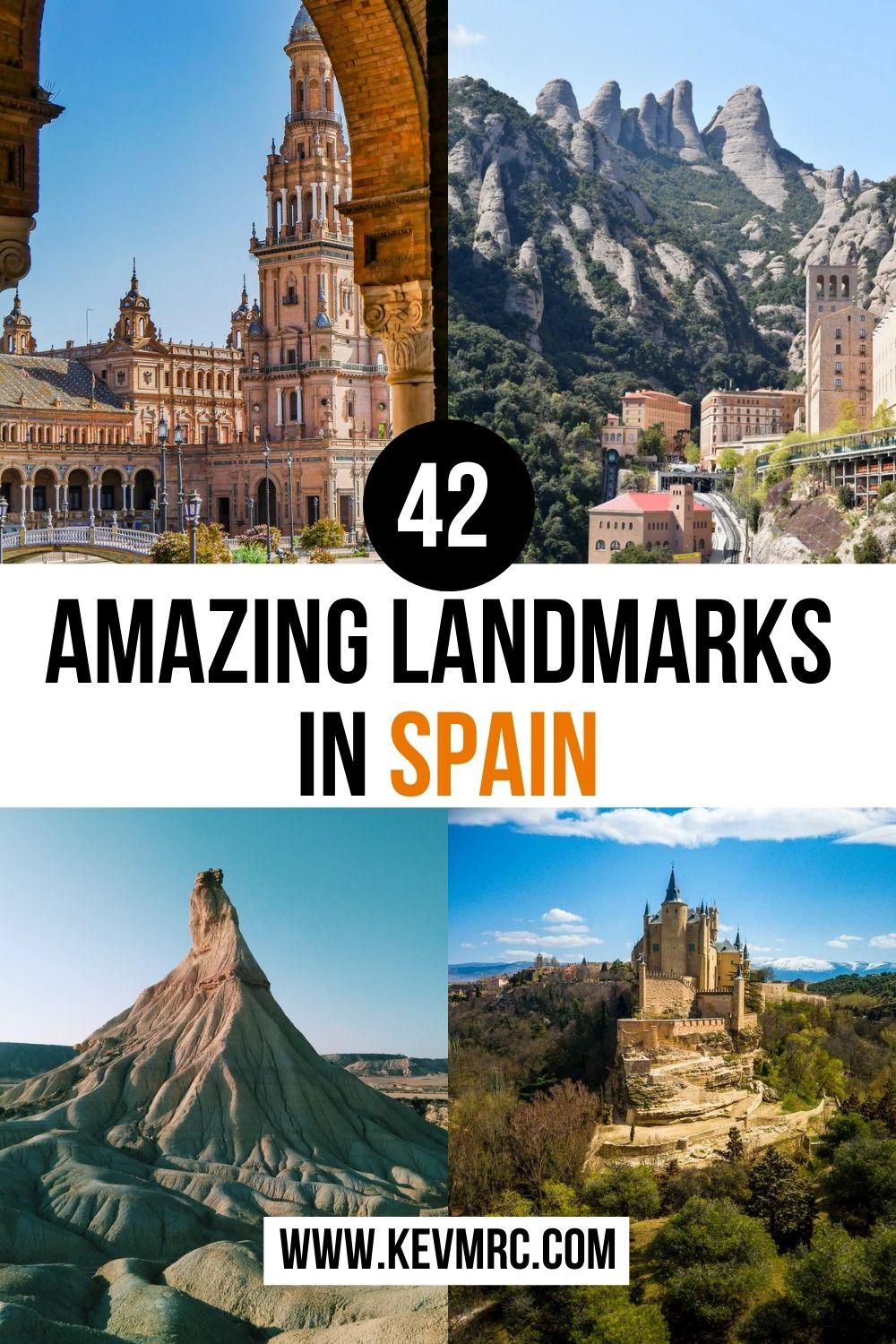


![40 Famous Landmarks in Greece [100% worth a visit]](https://www.kevmrc.com/wp-content/uploads/2022/06/40-famous-landmarks-in-greece.jpg)
